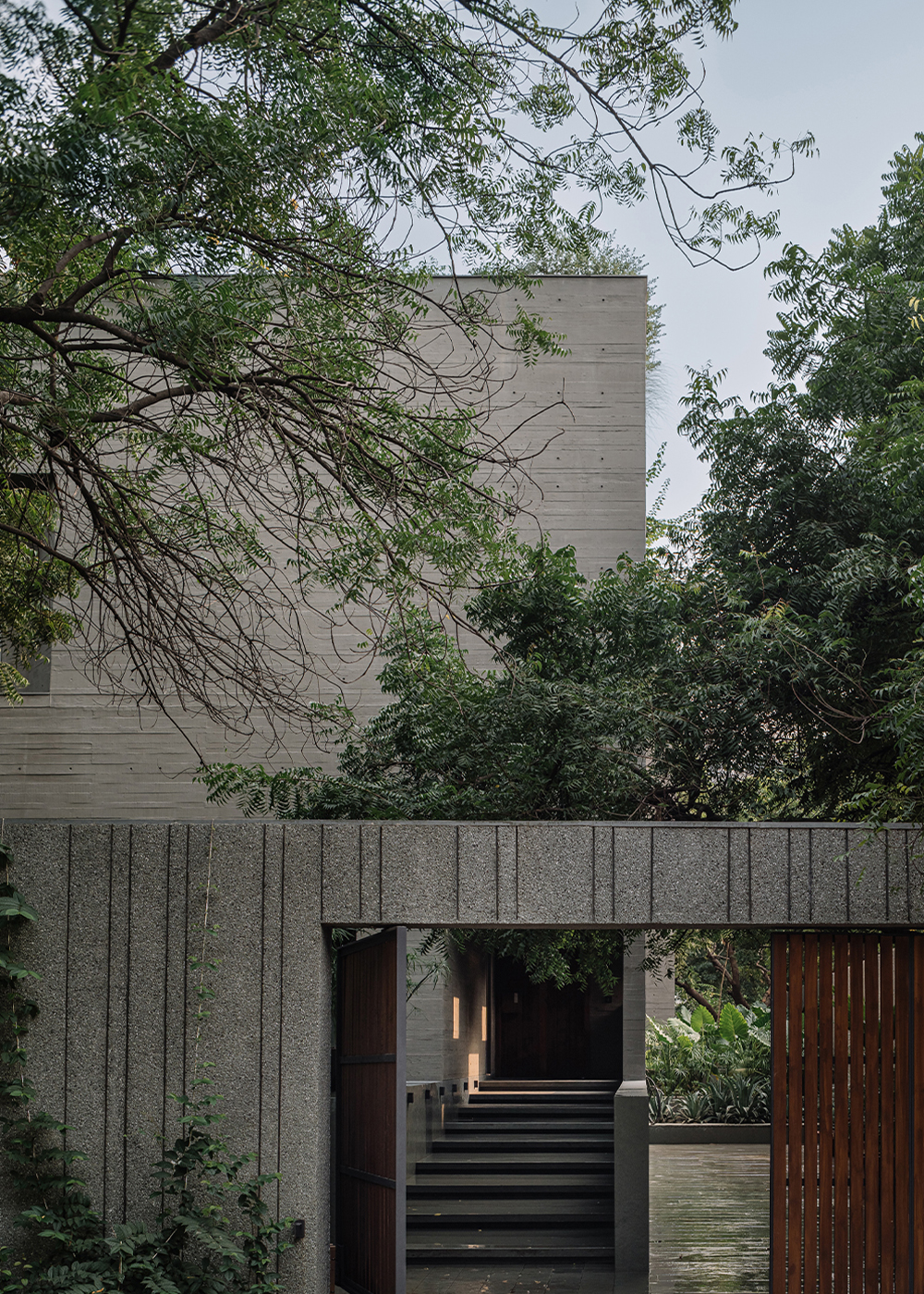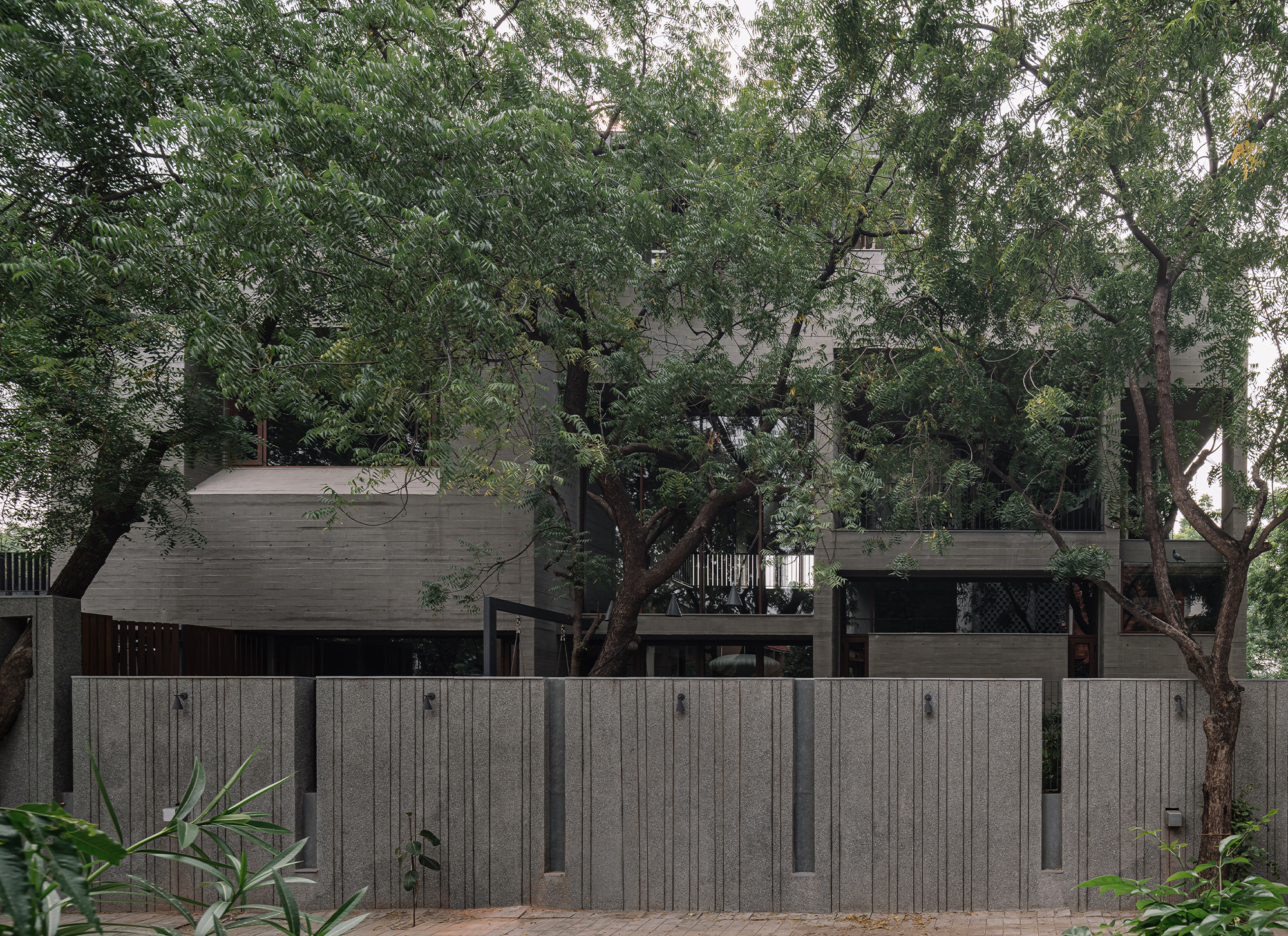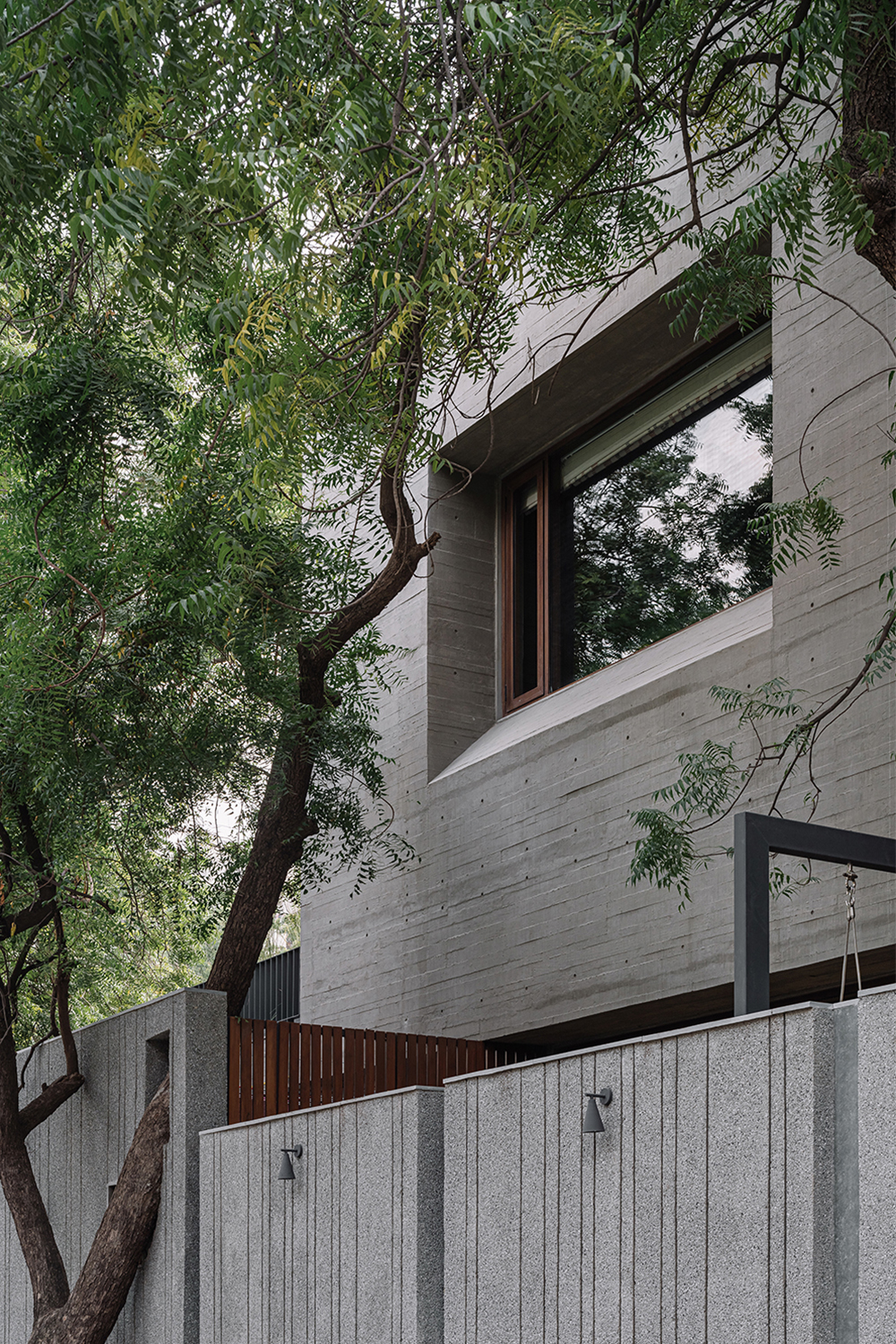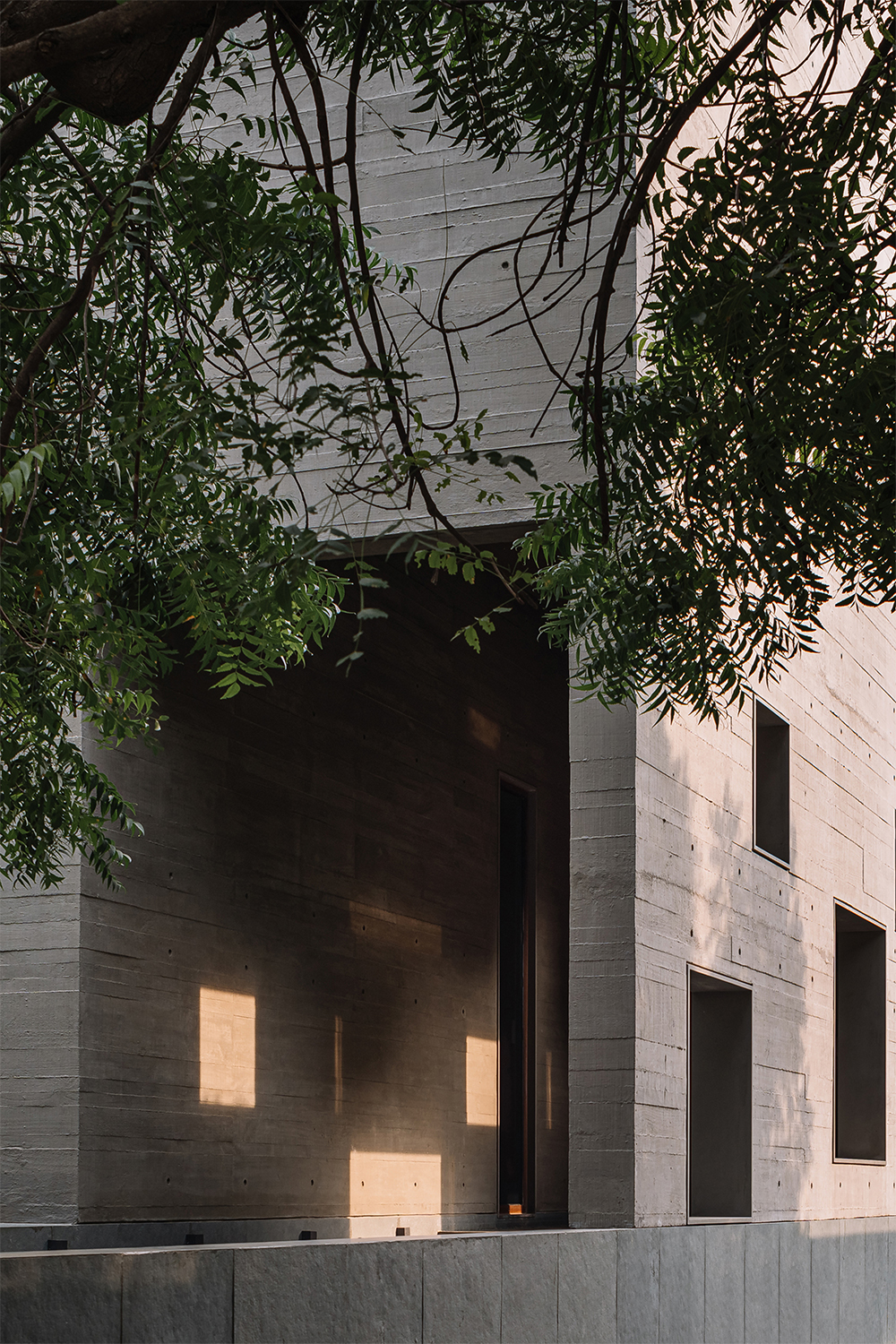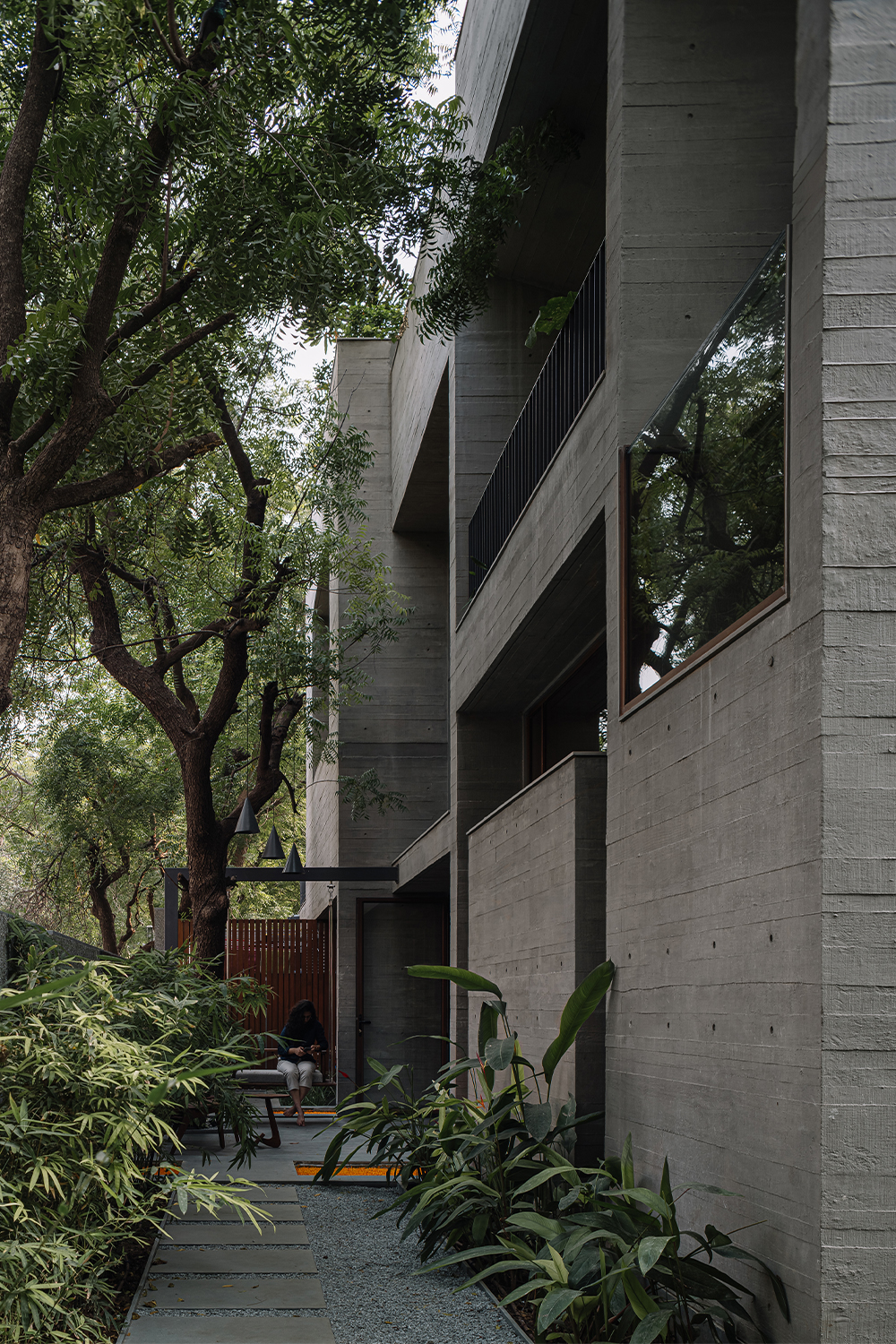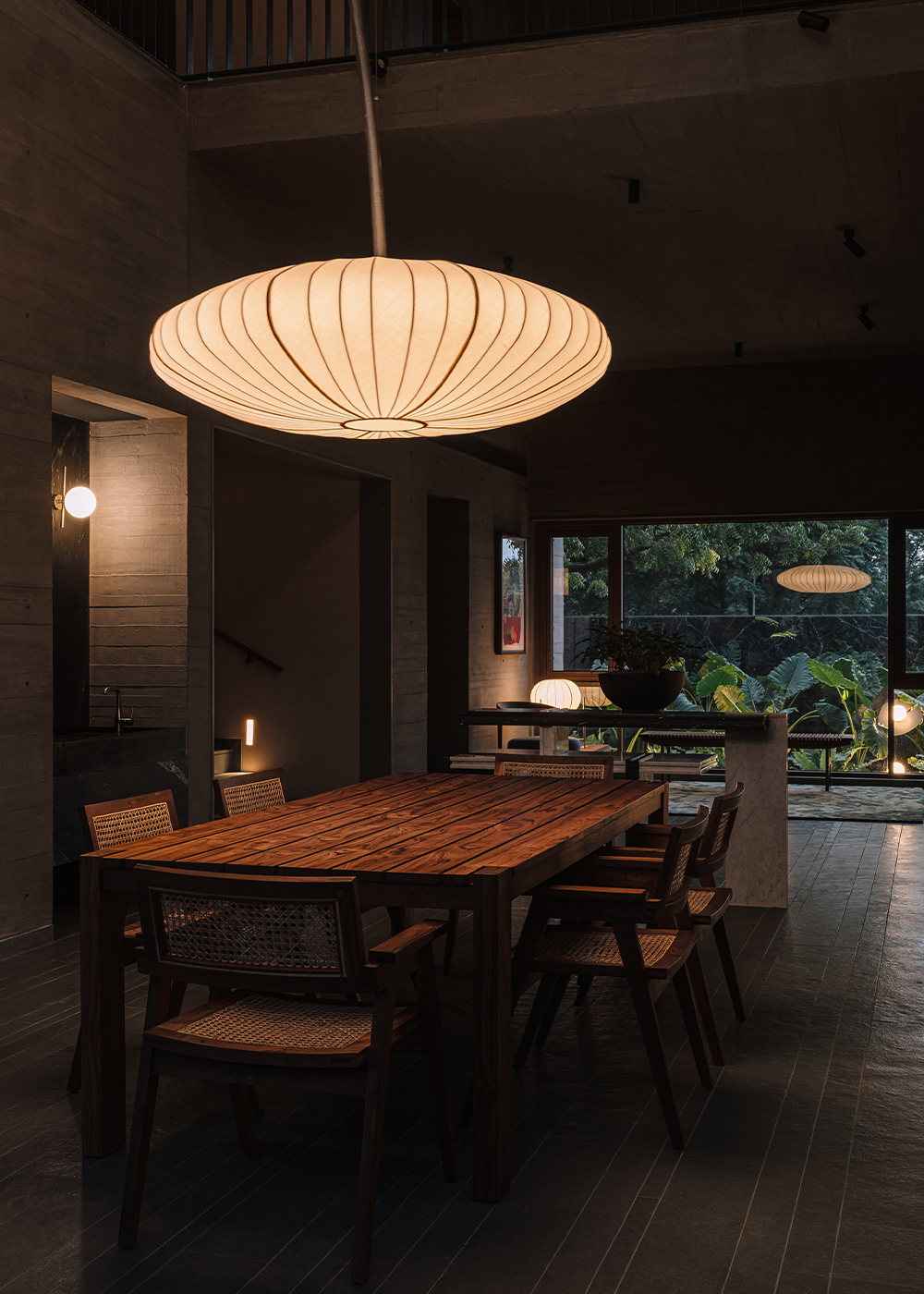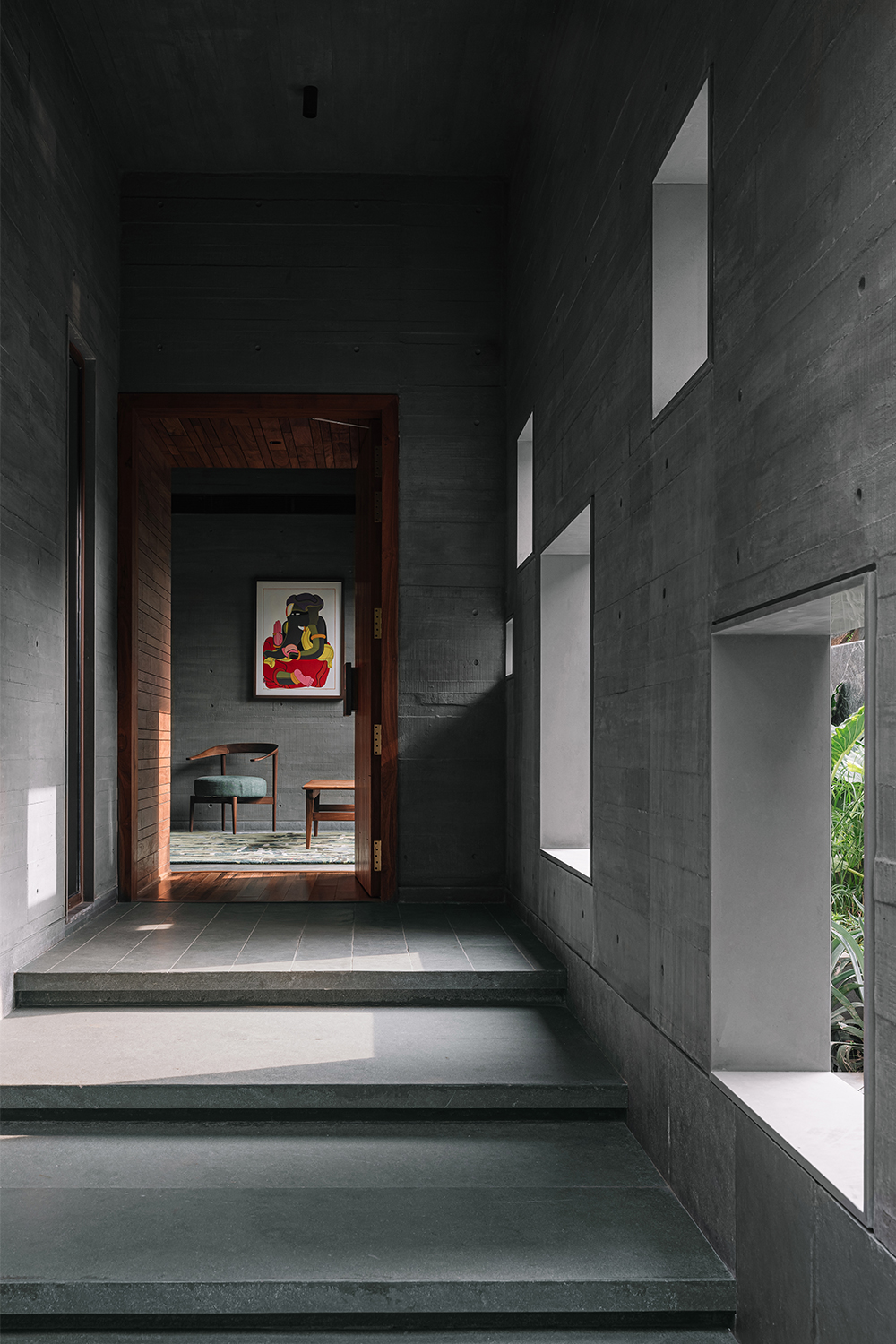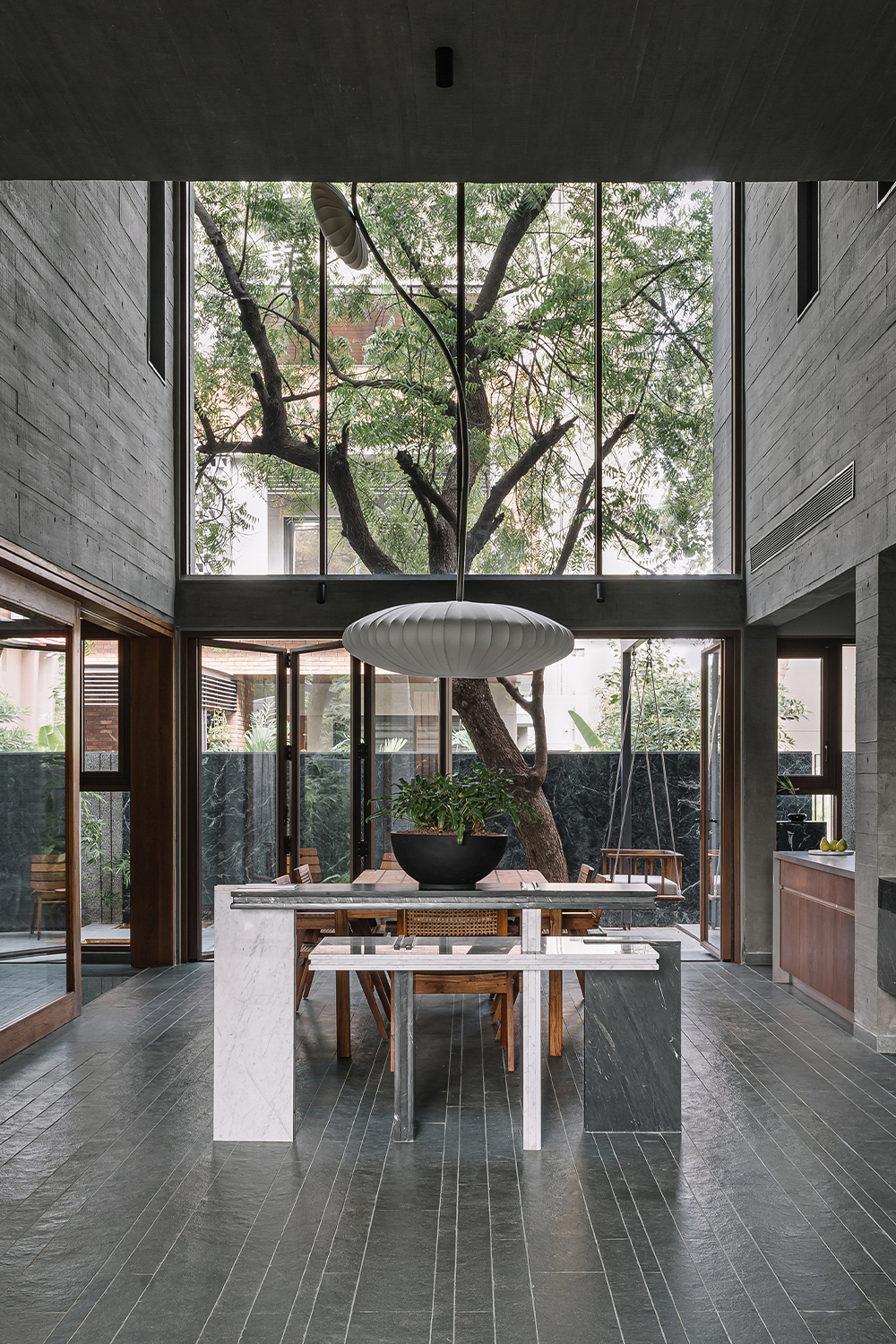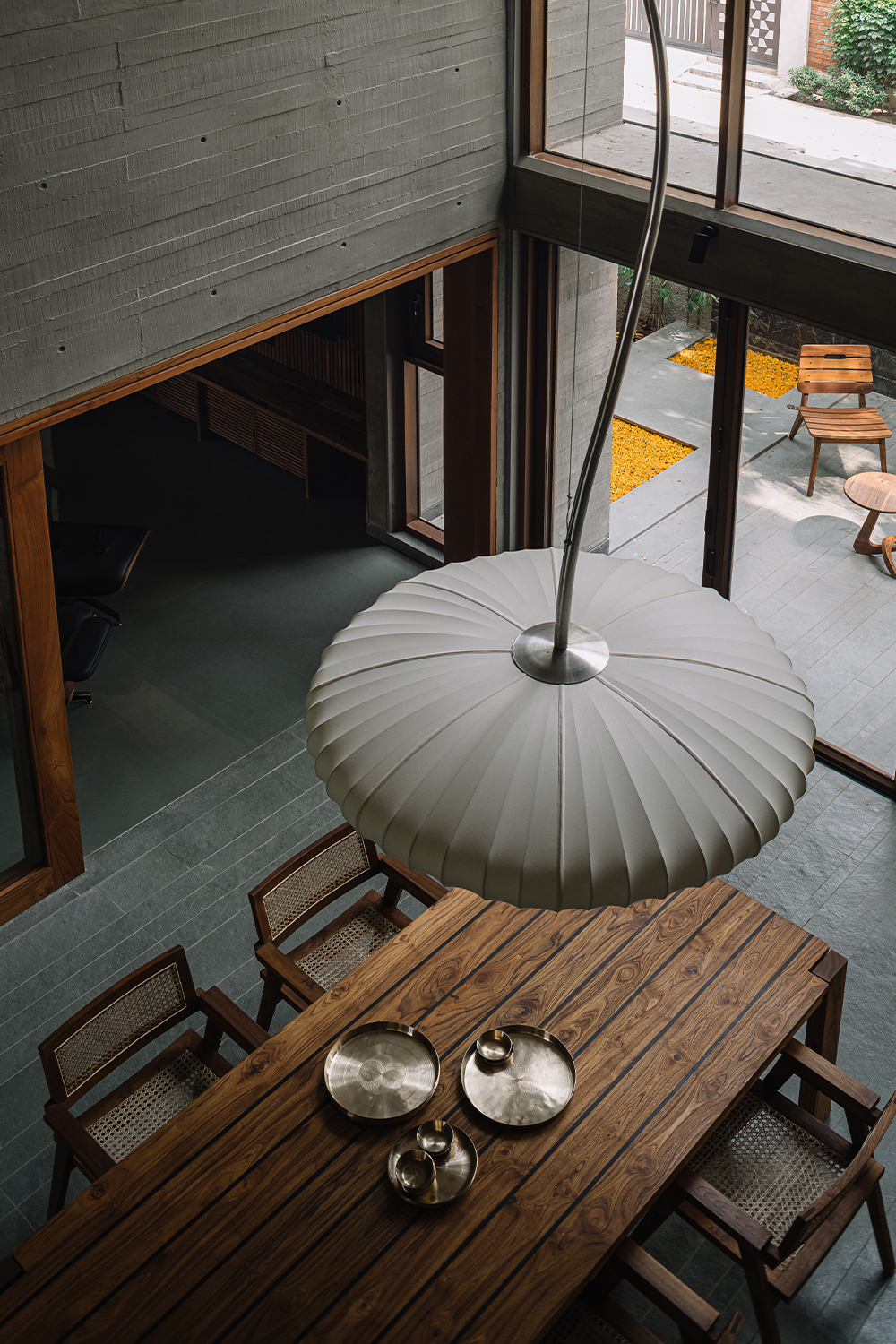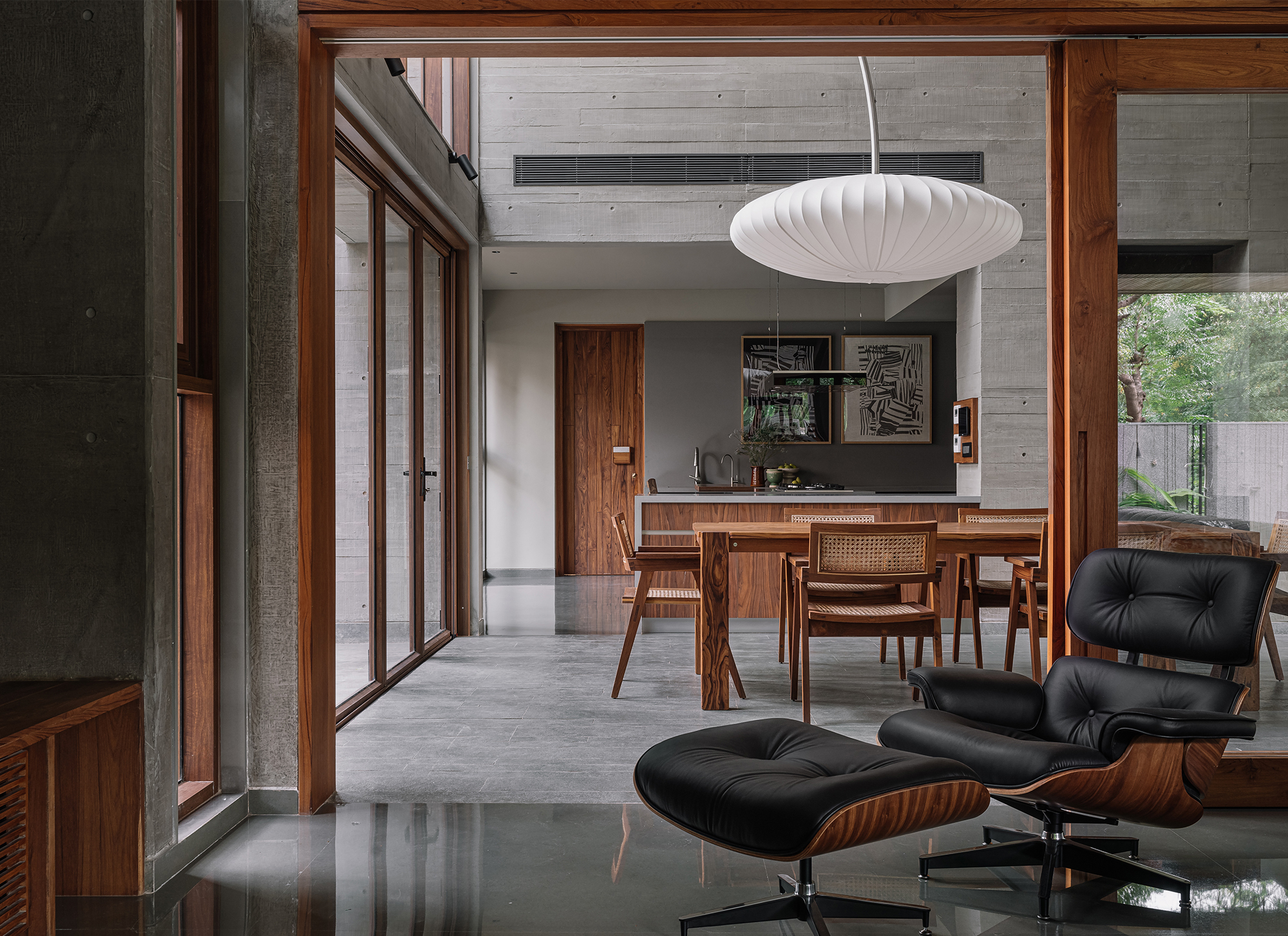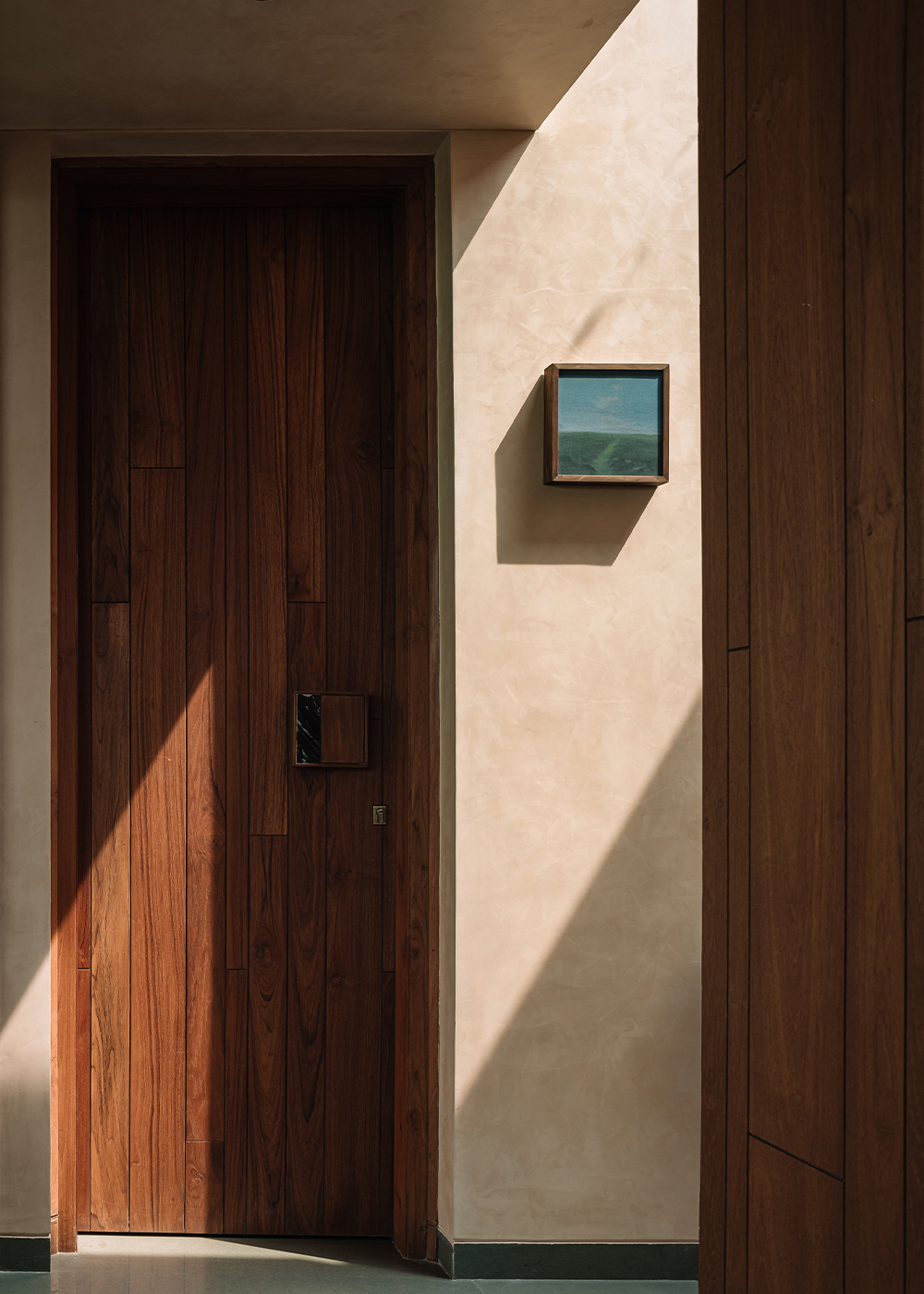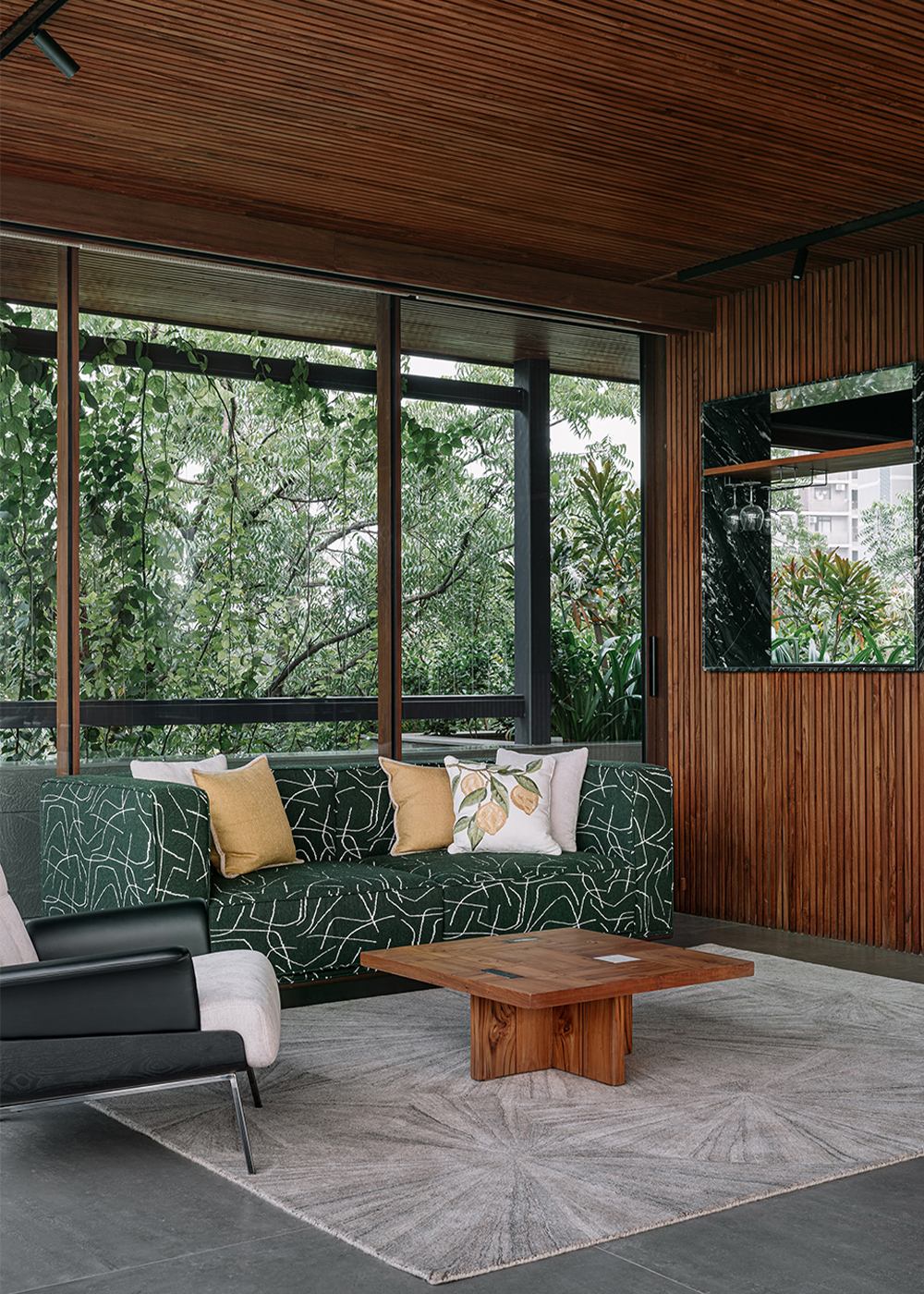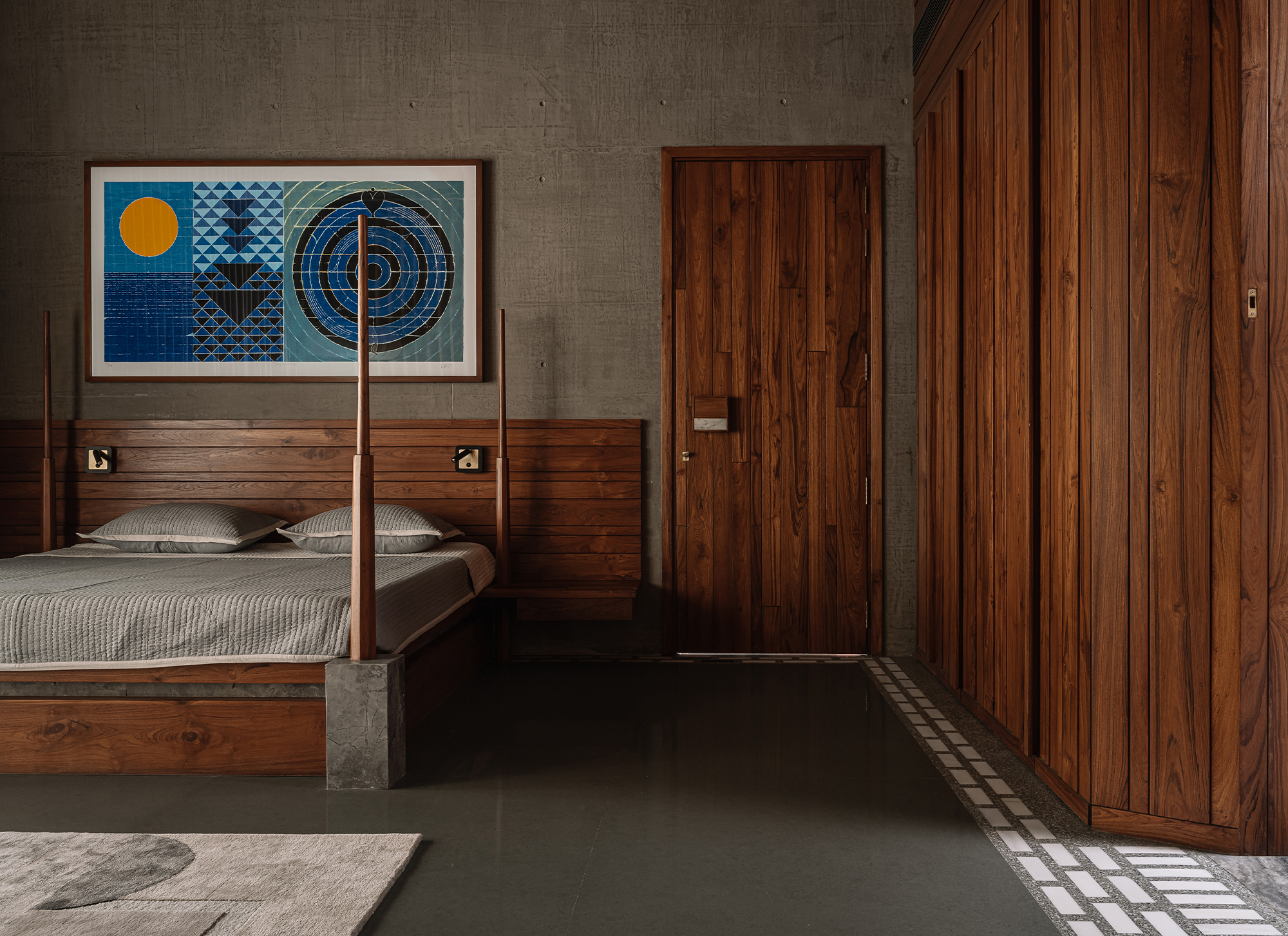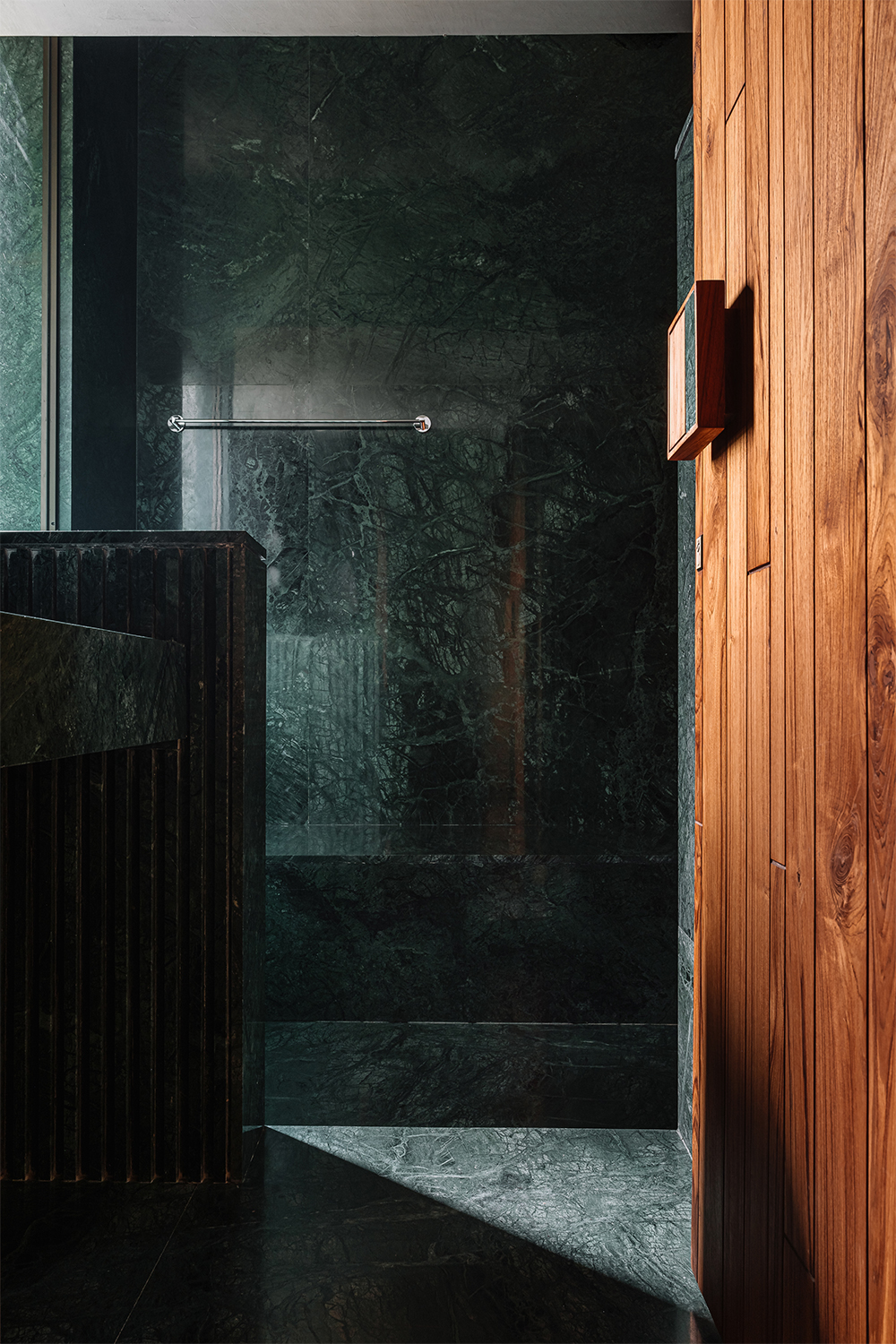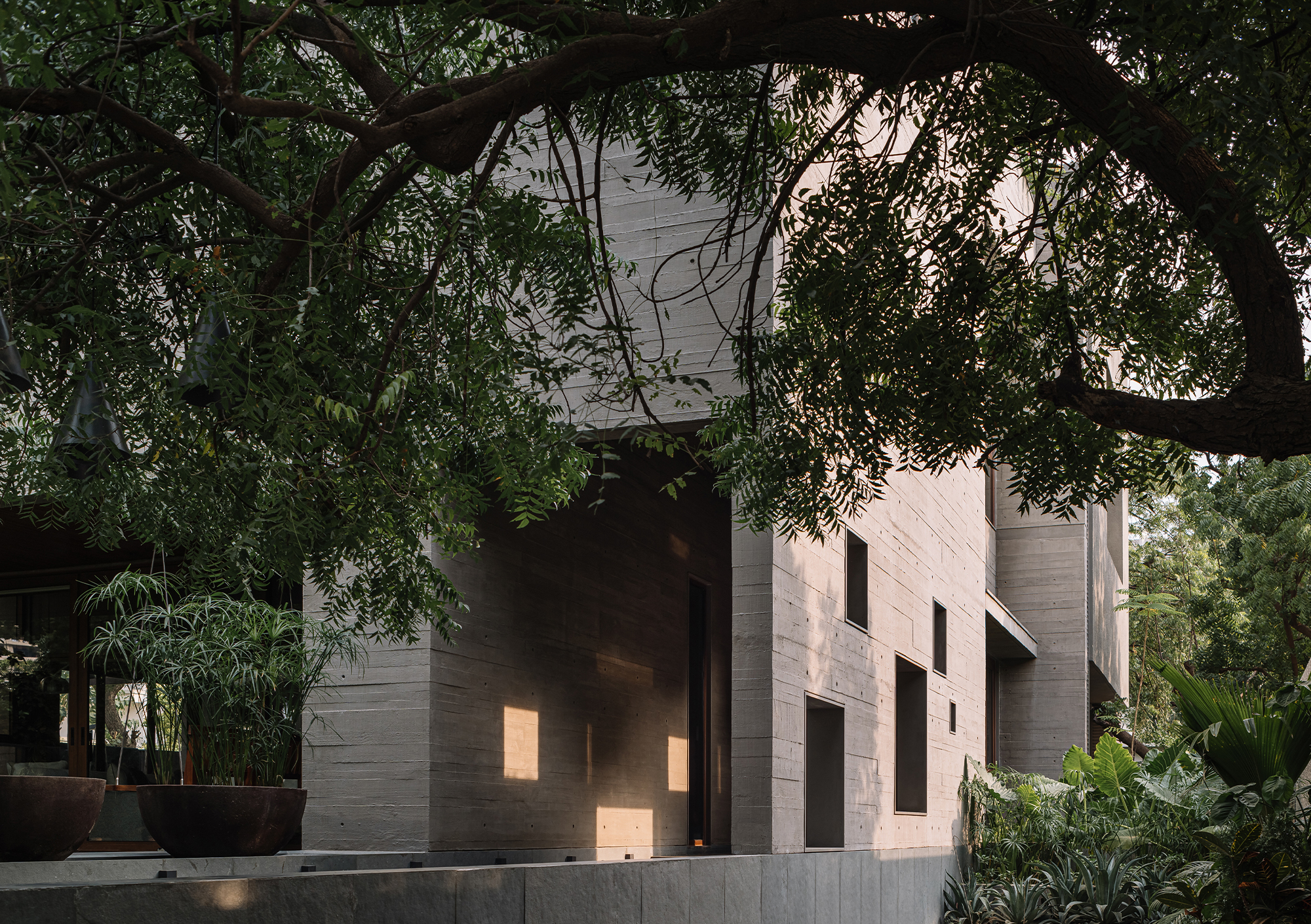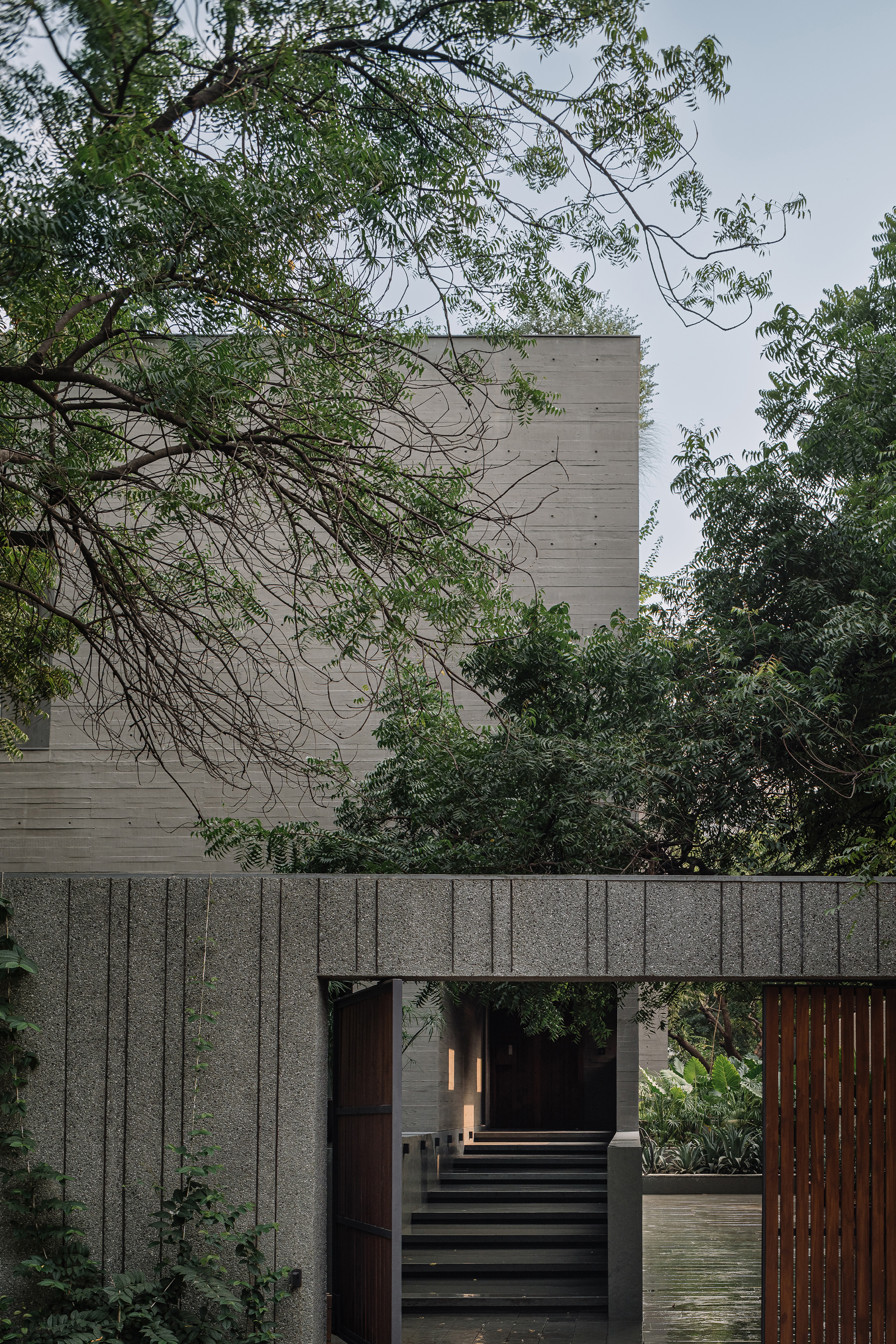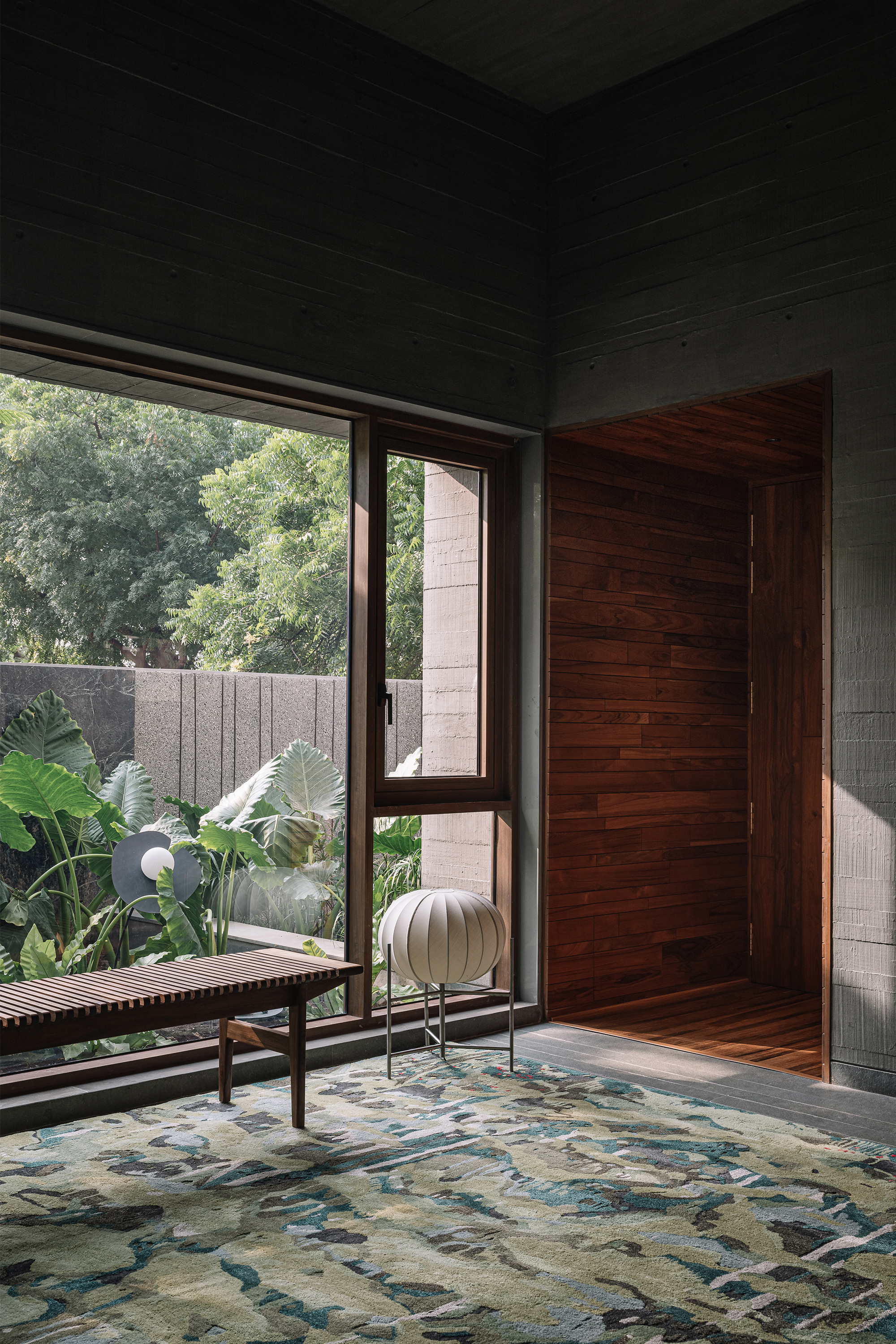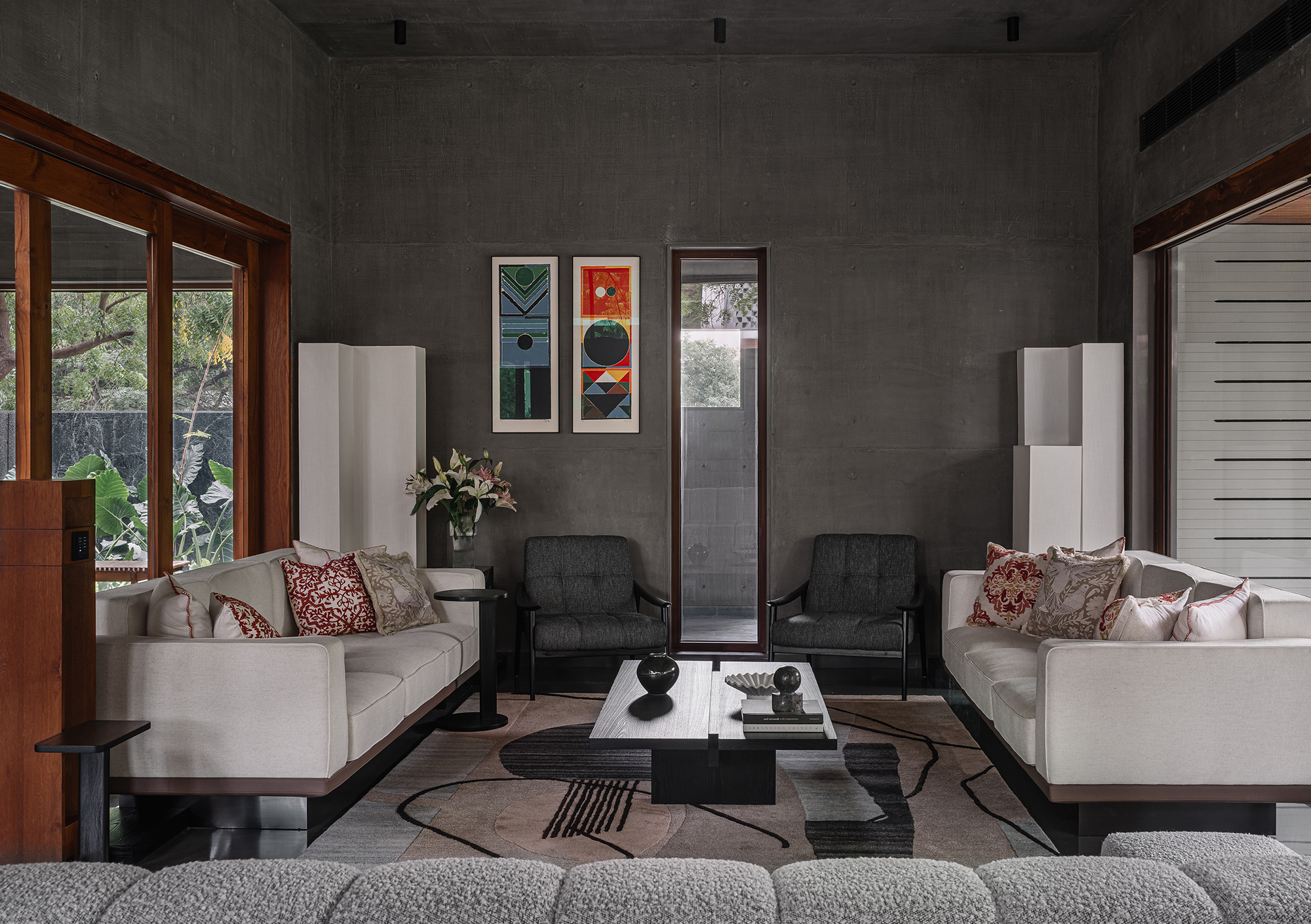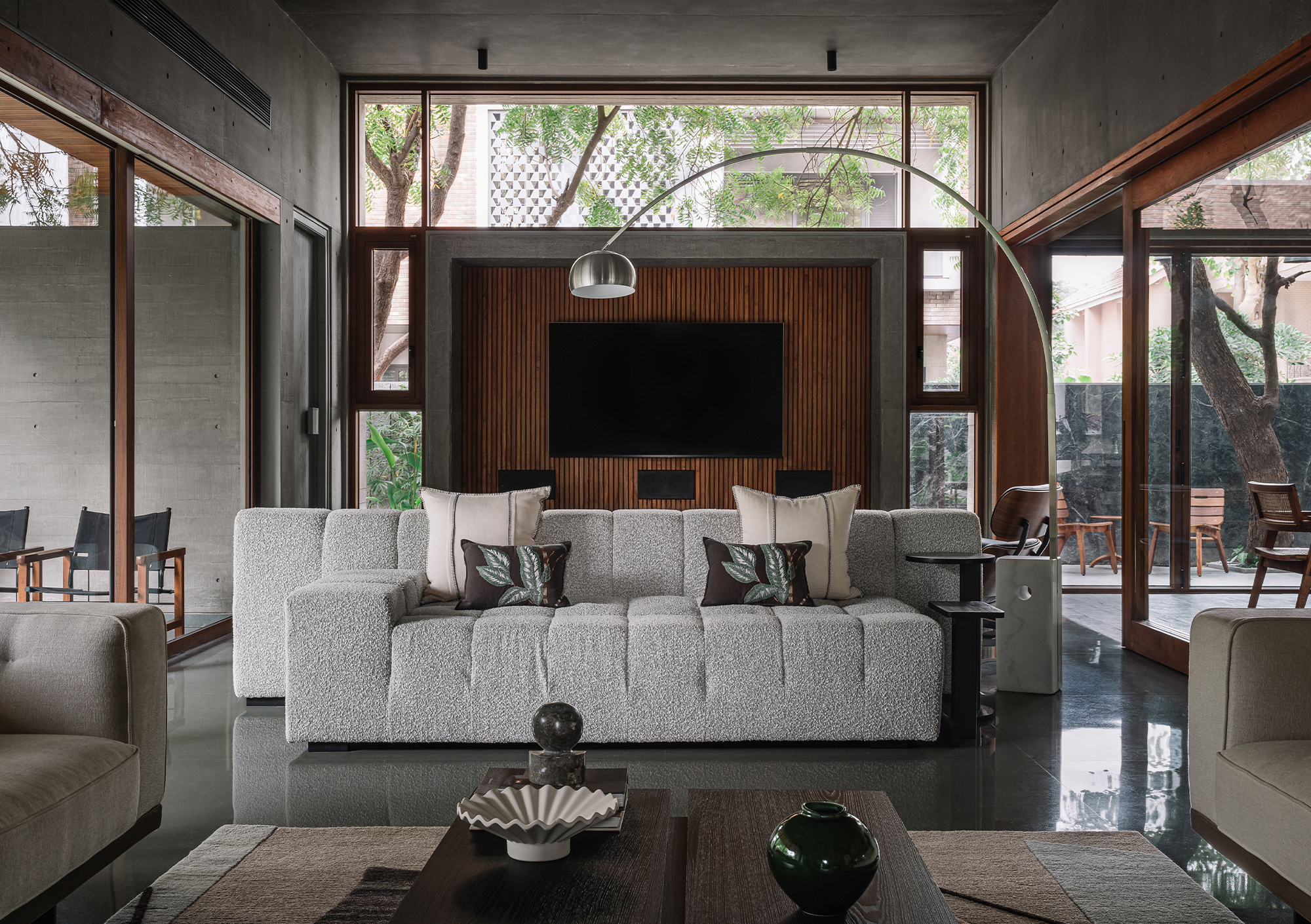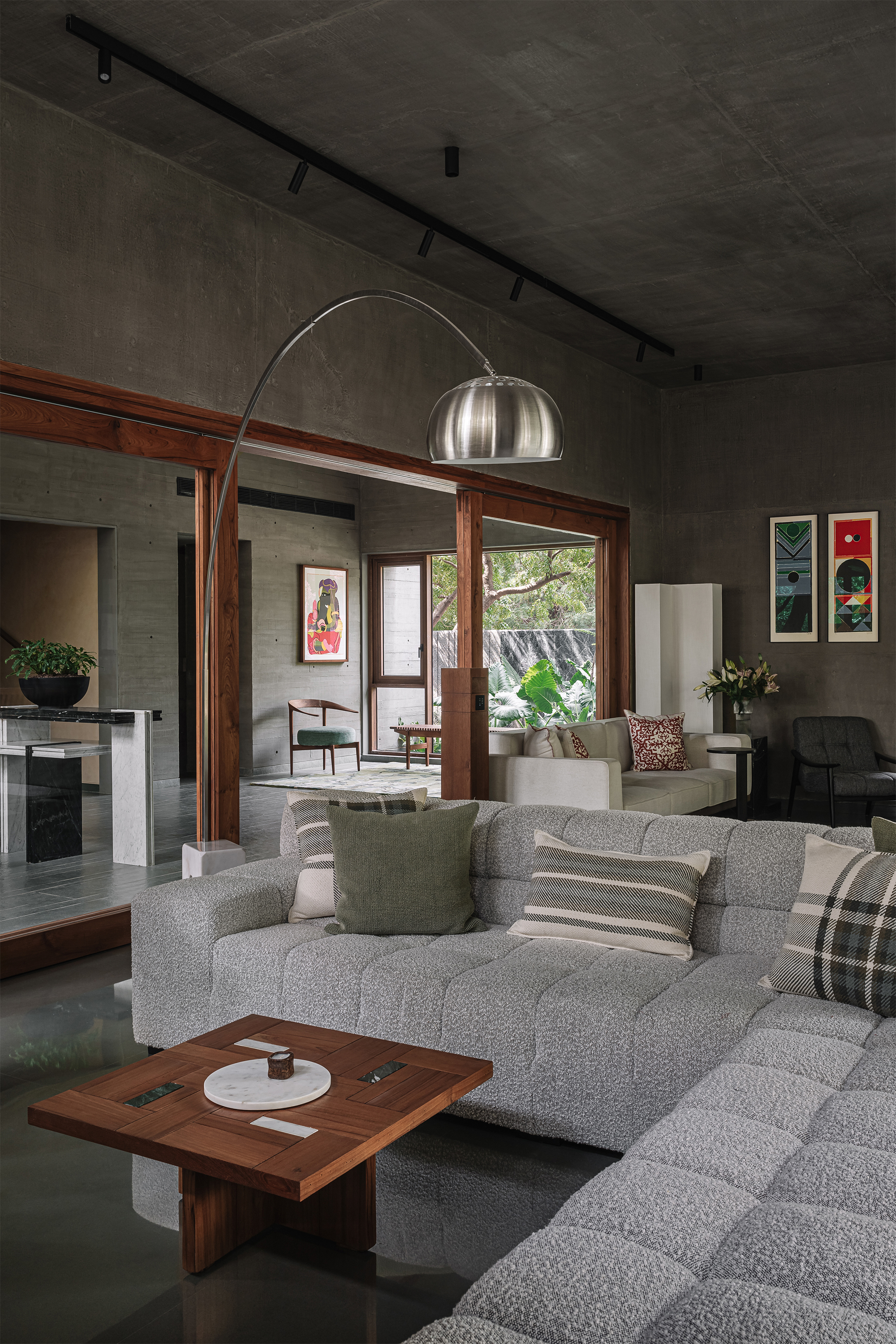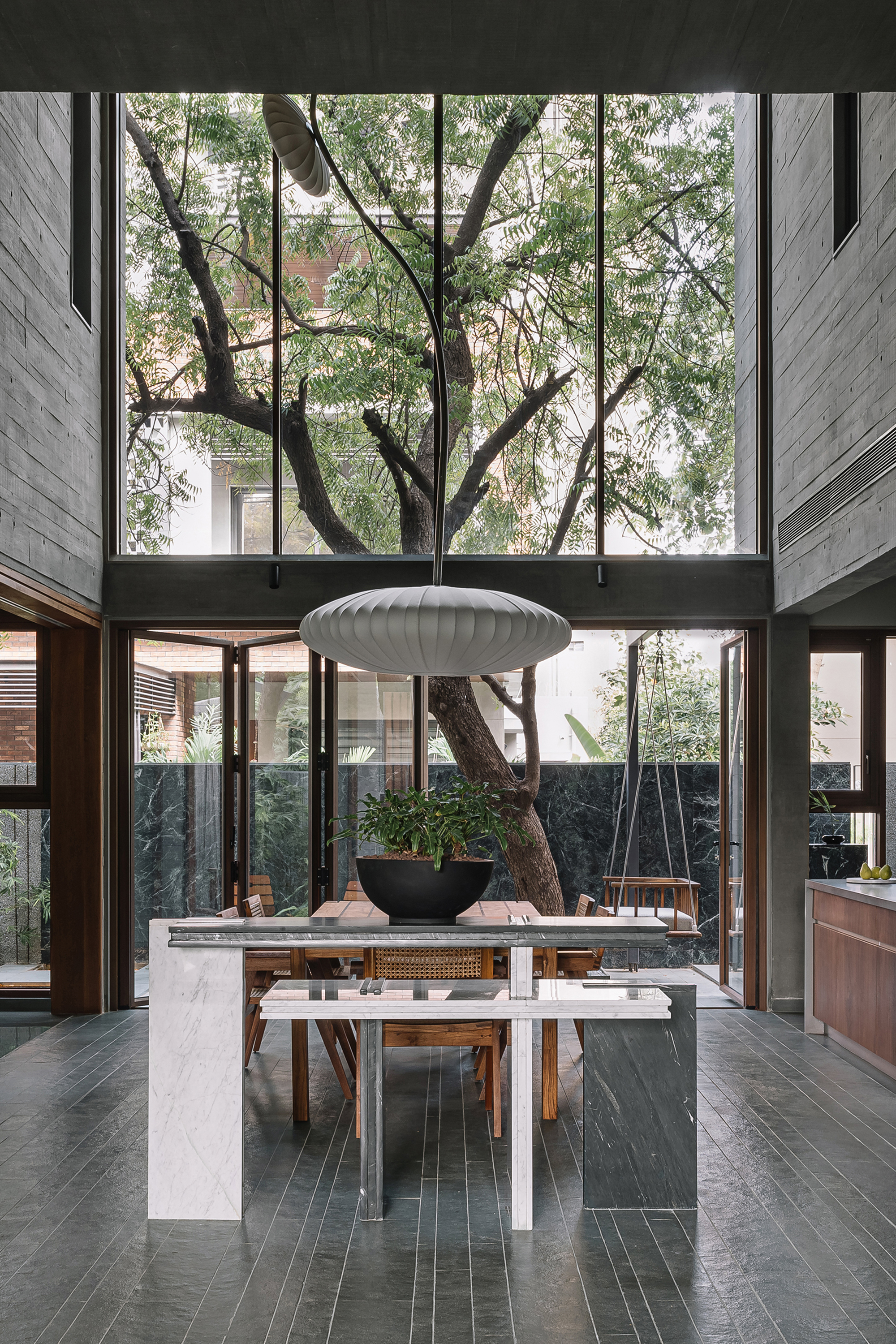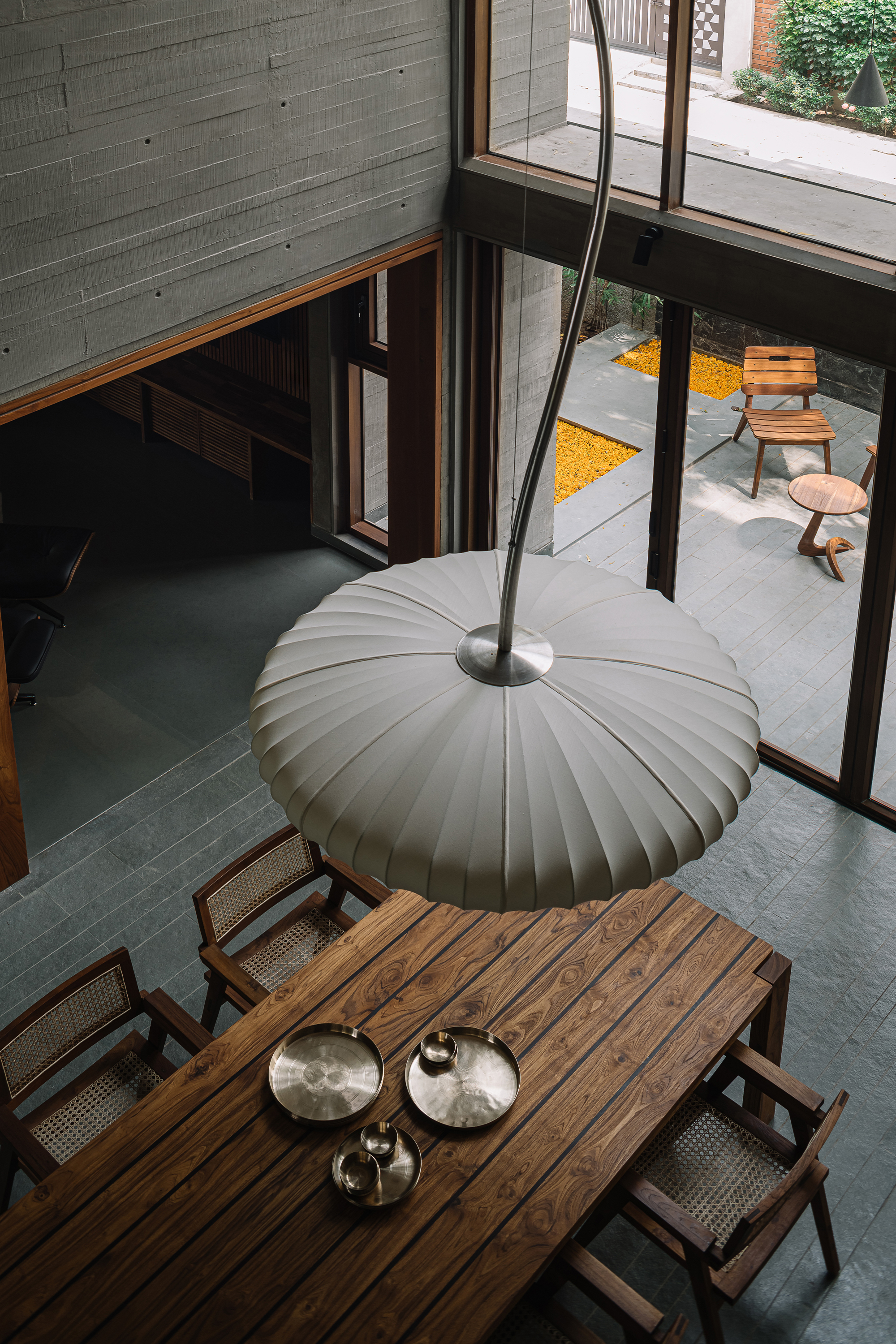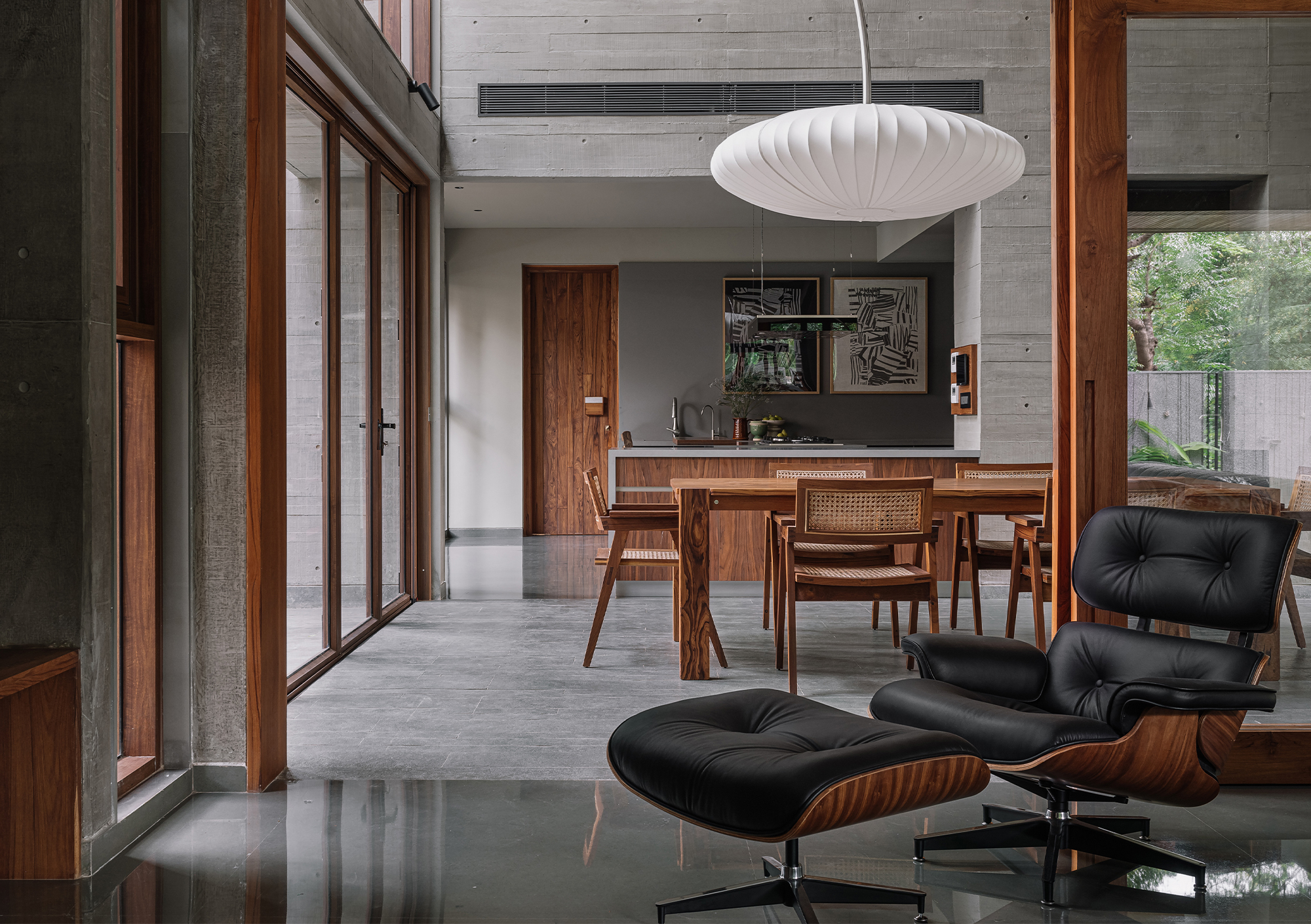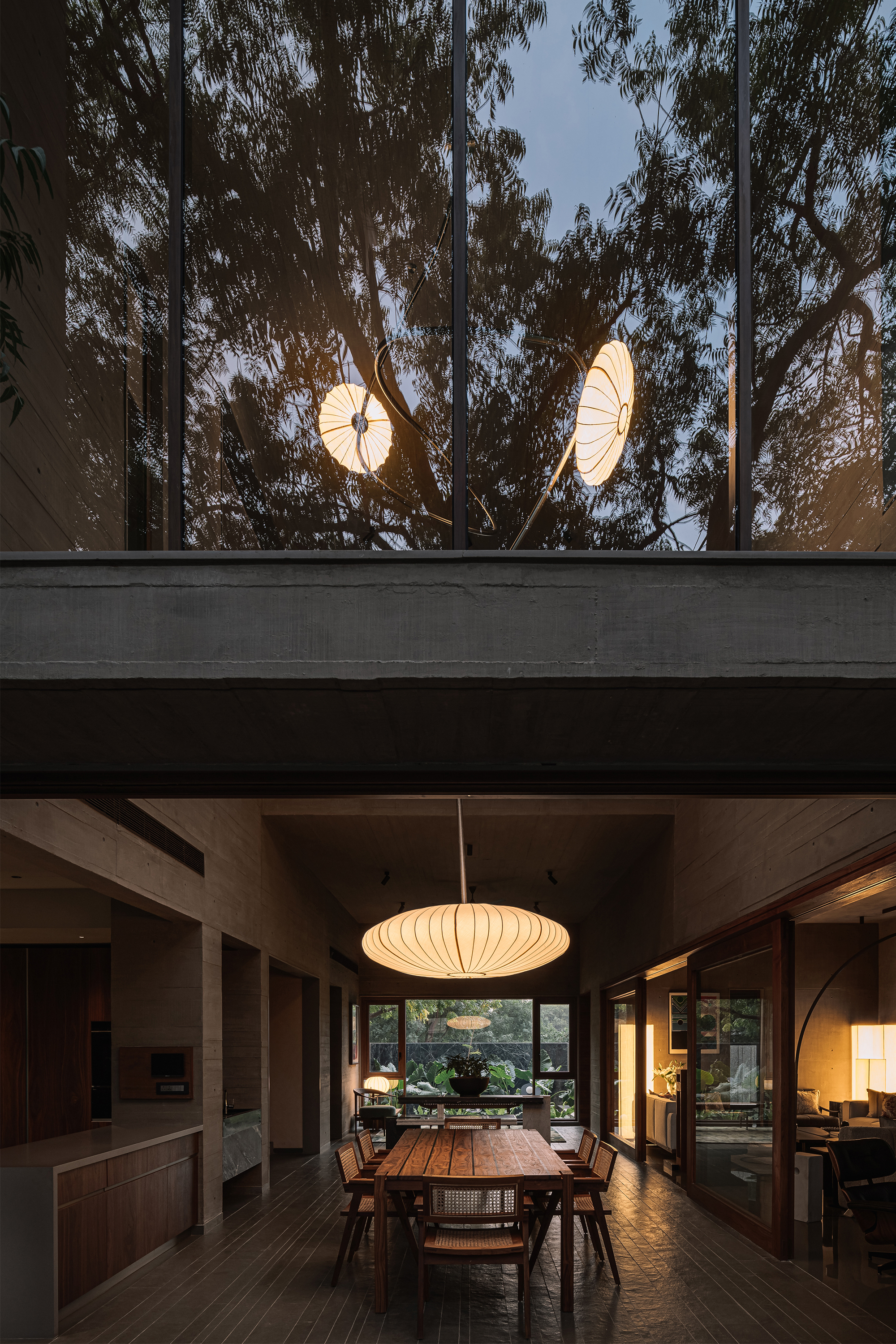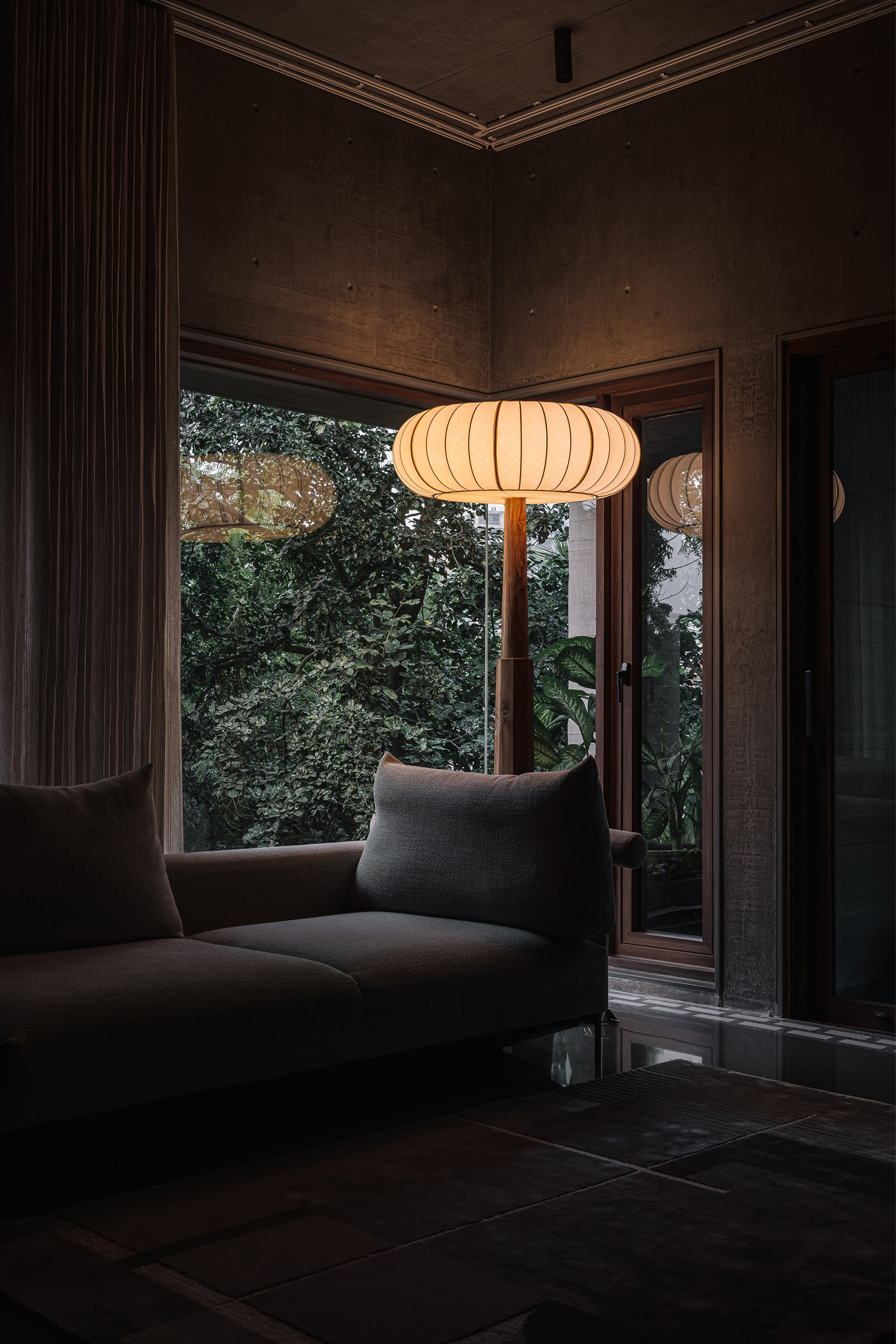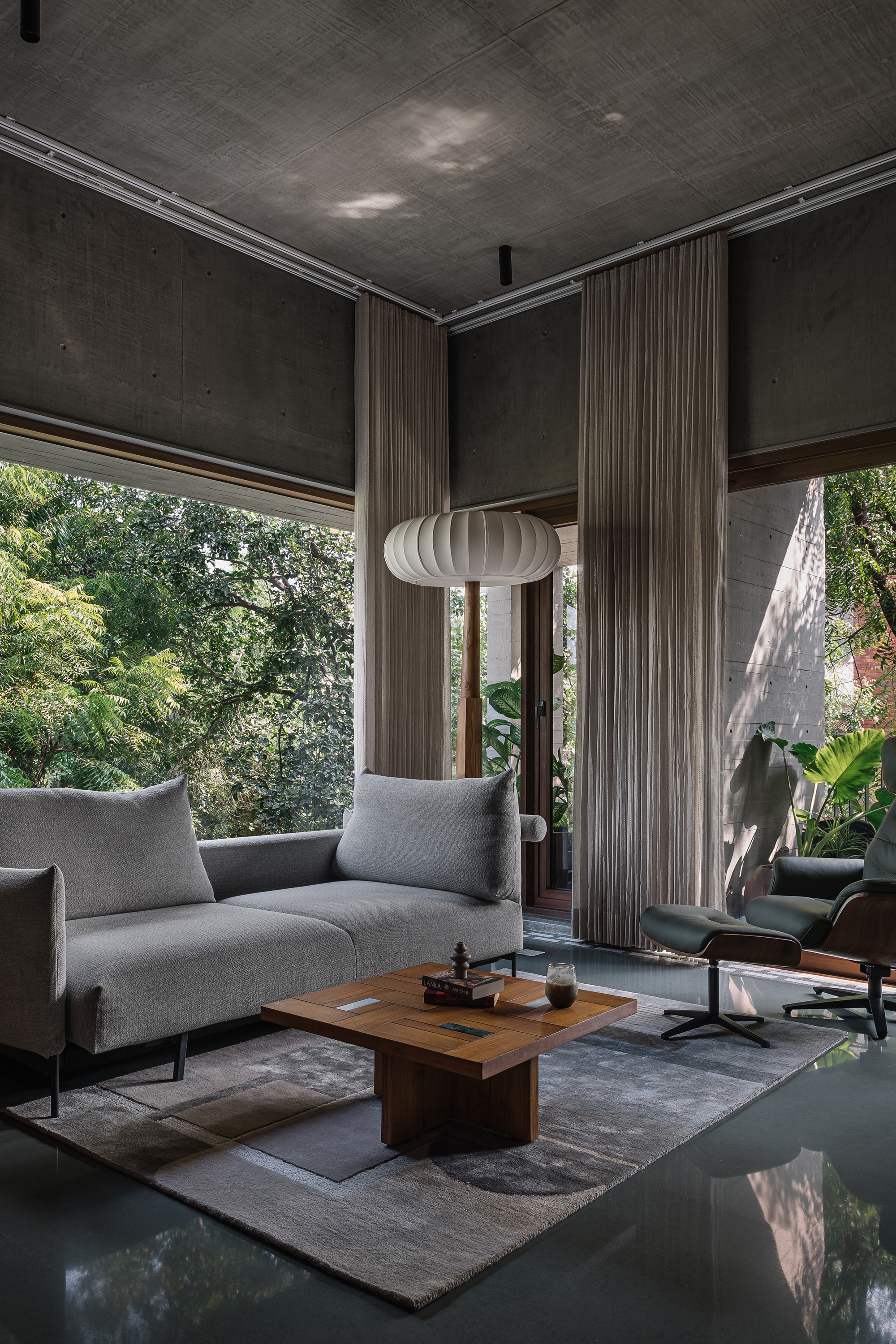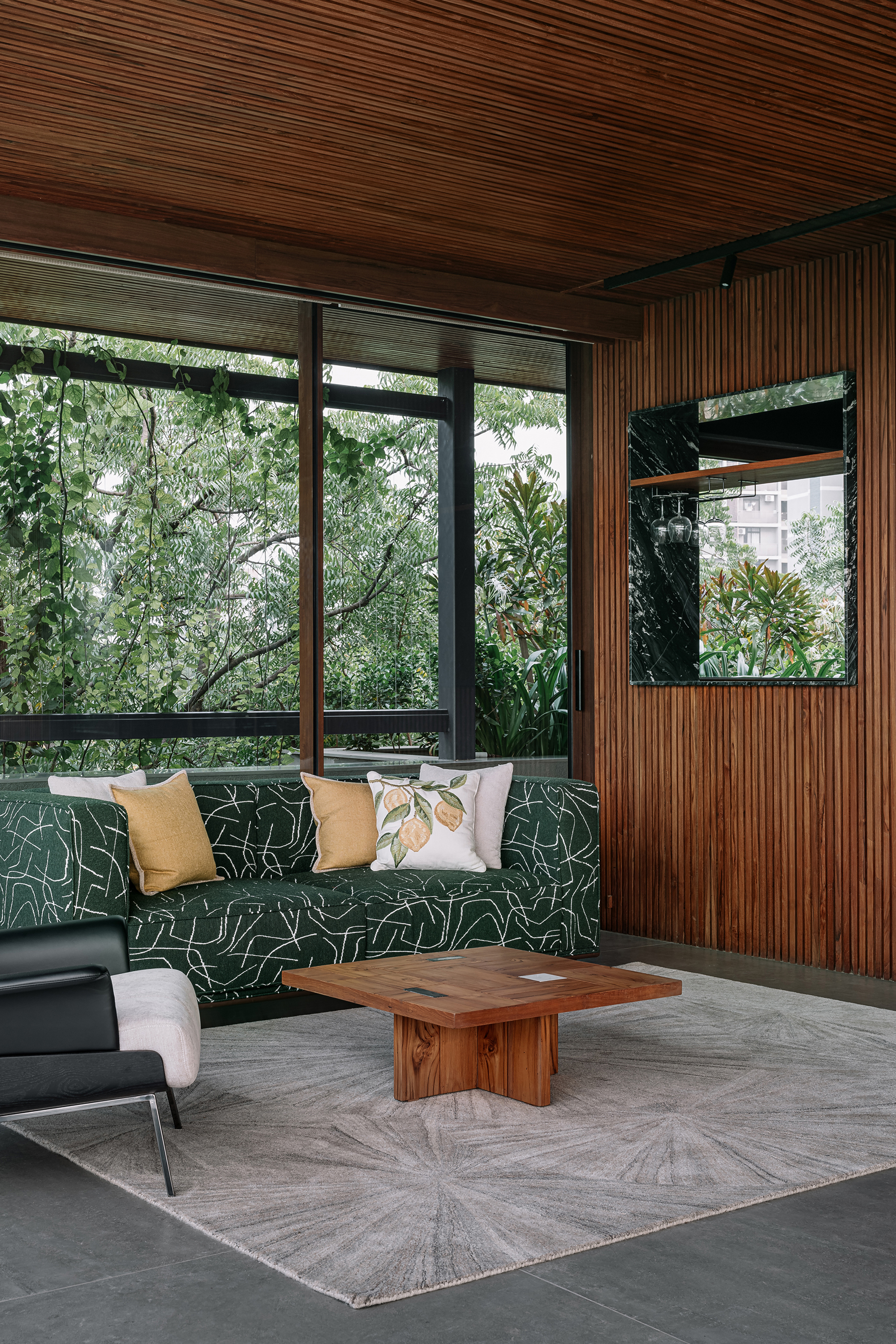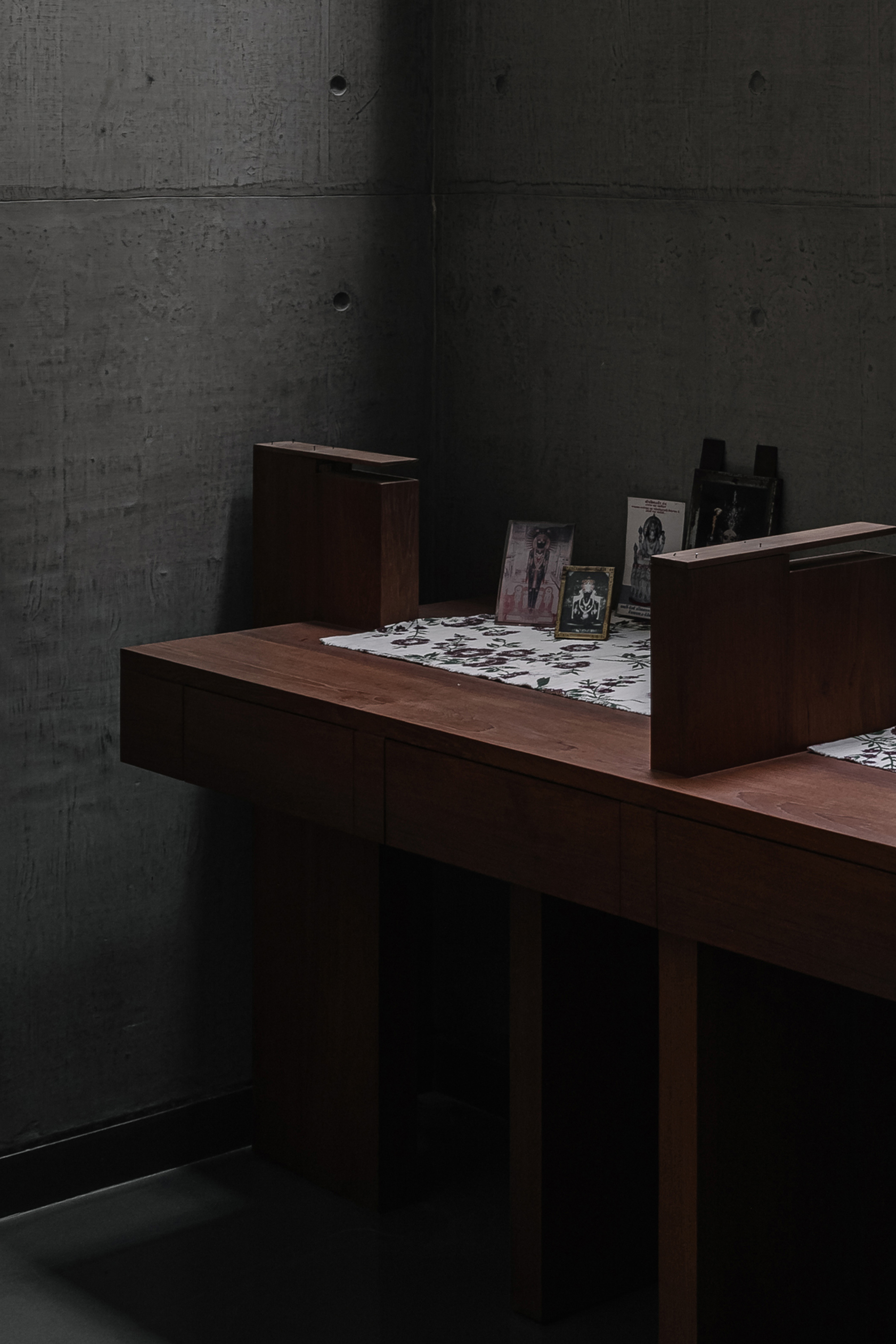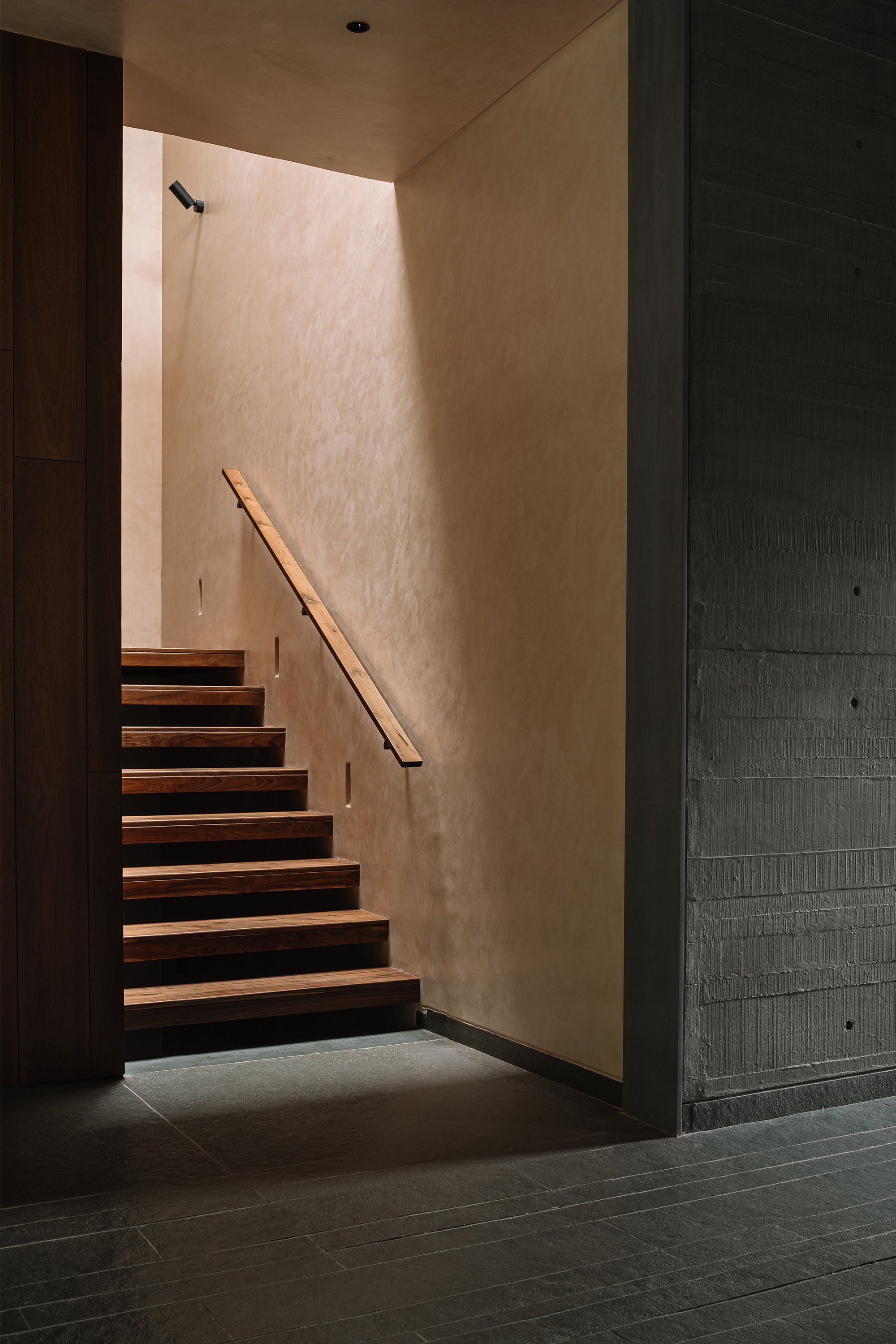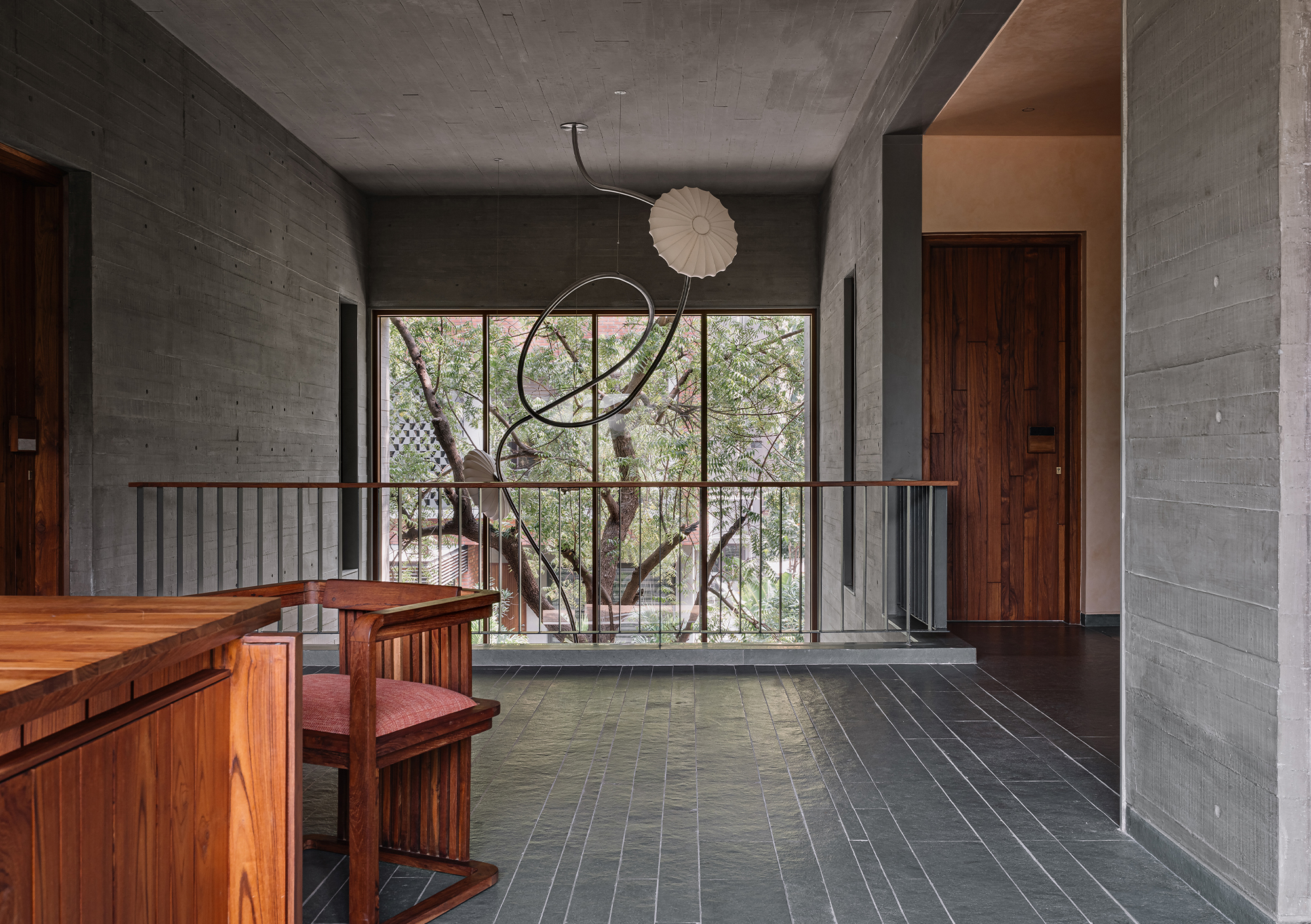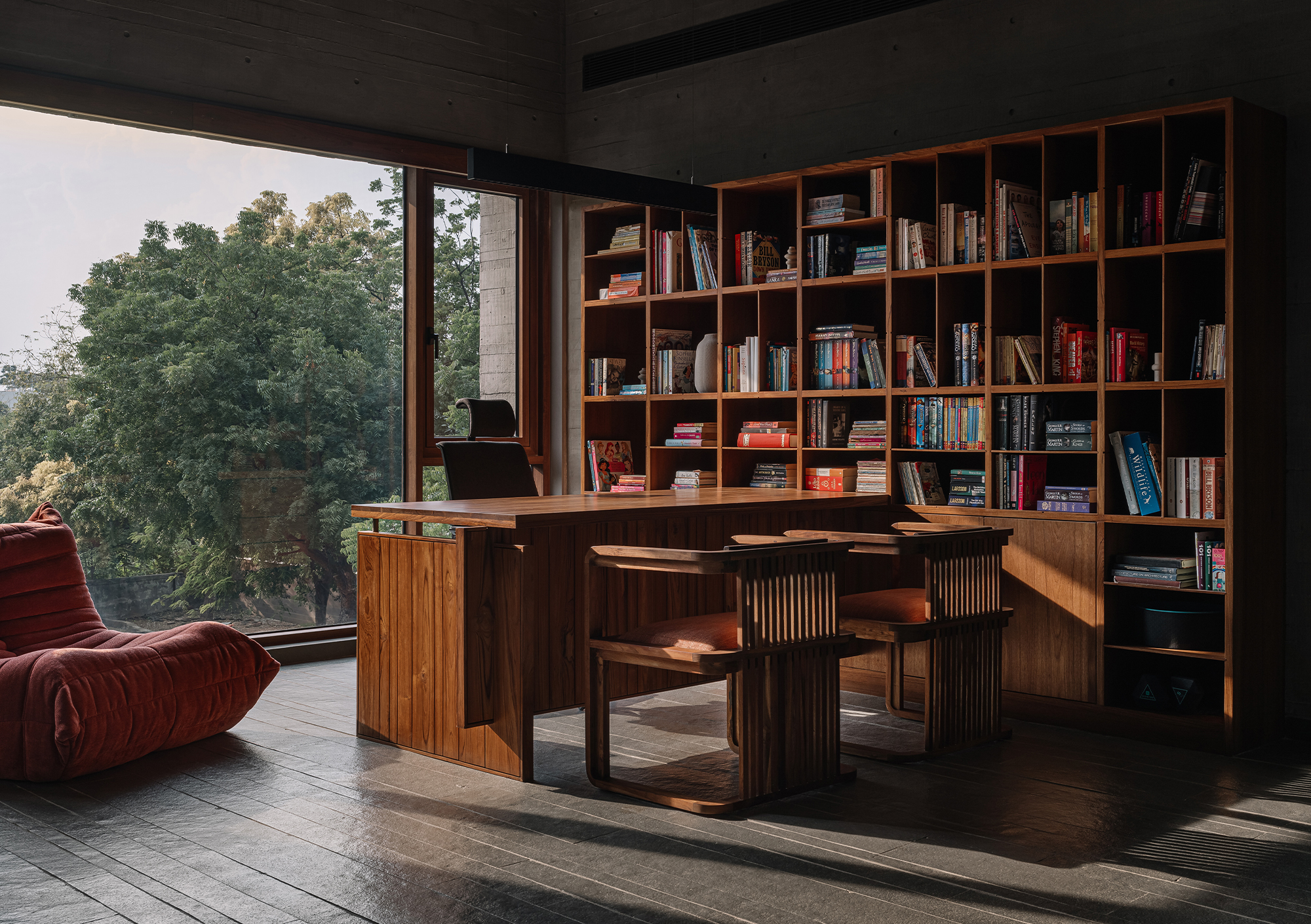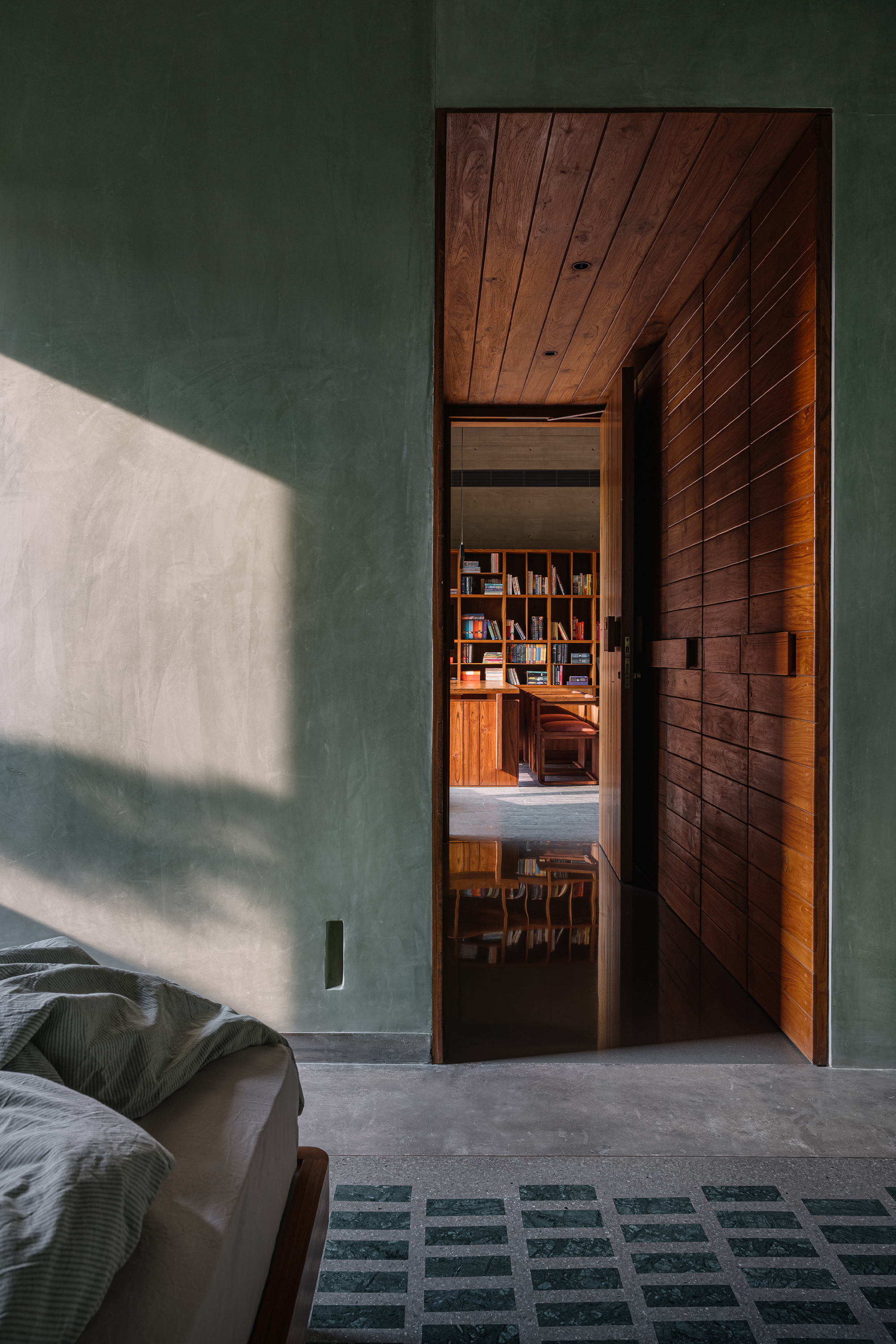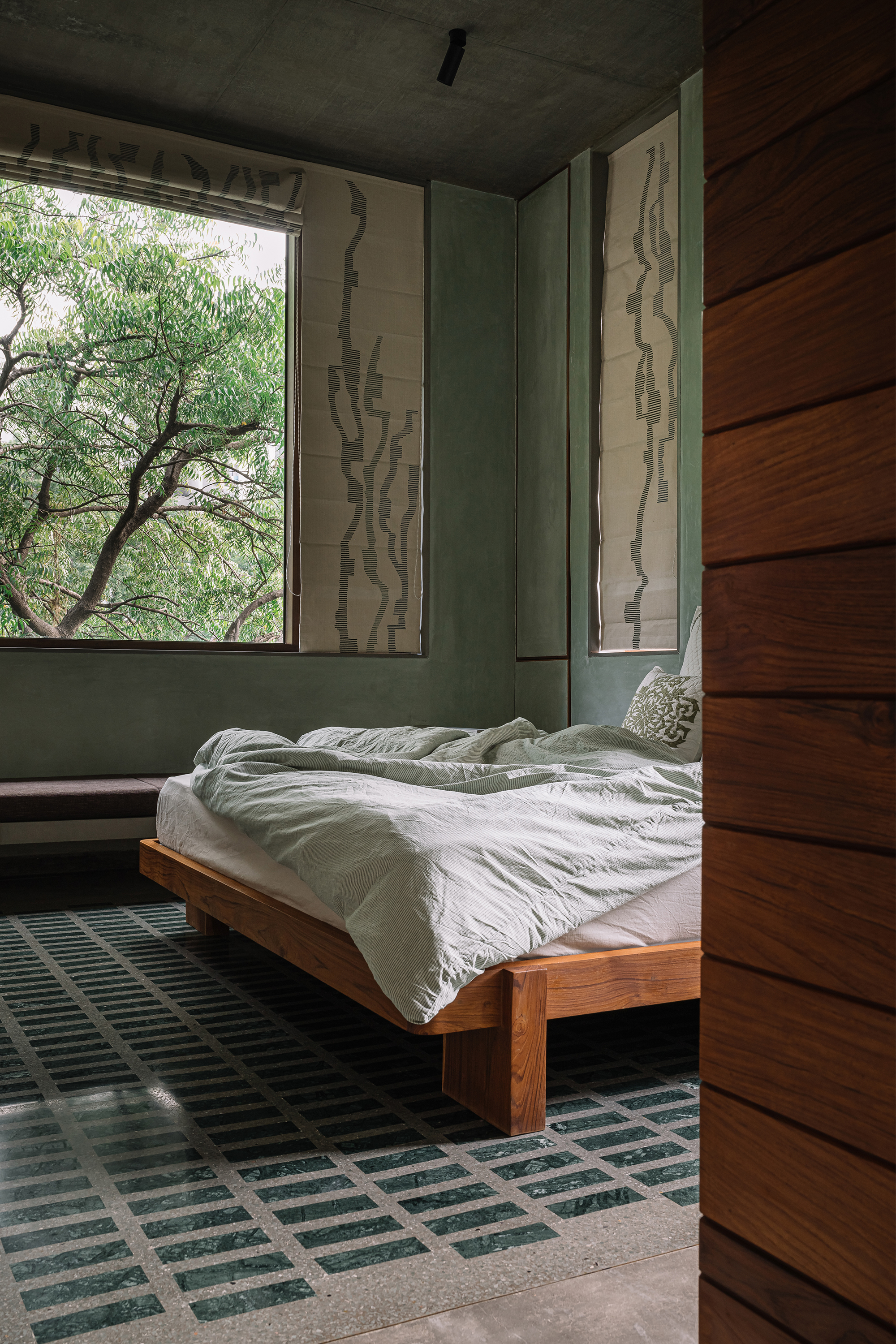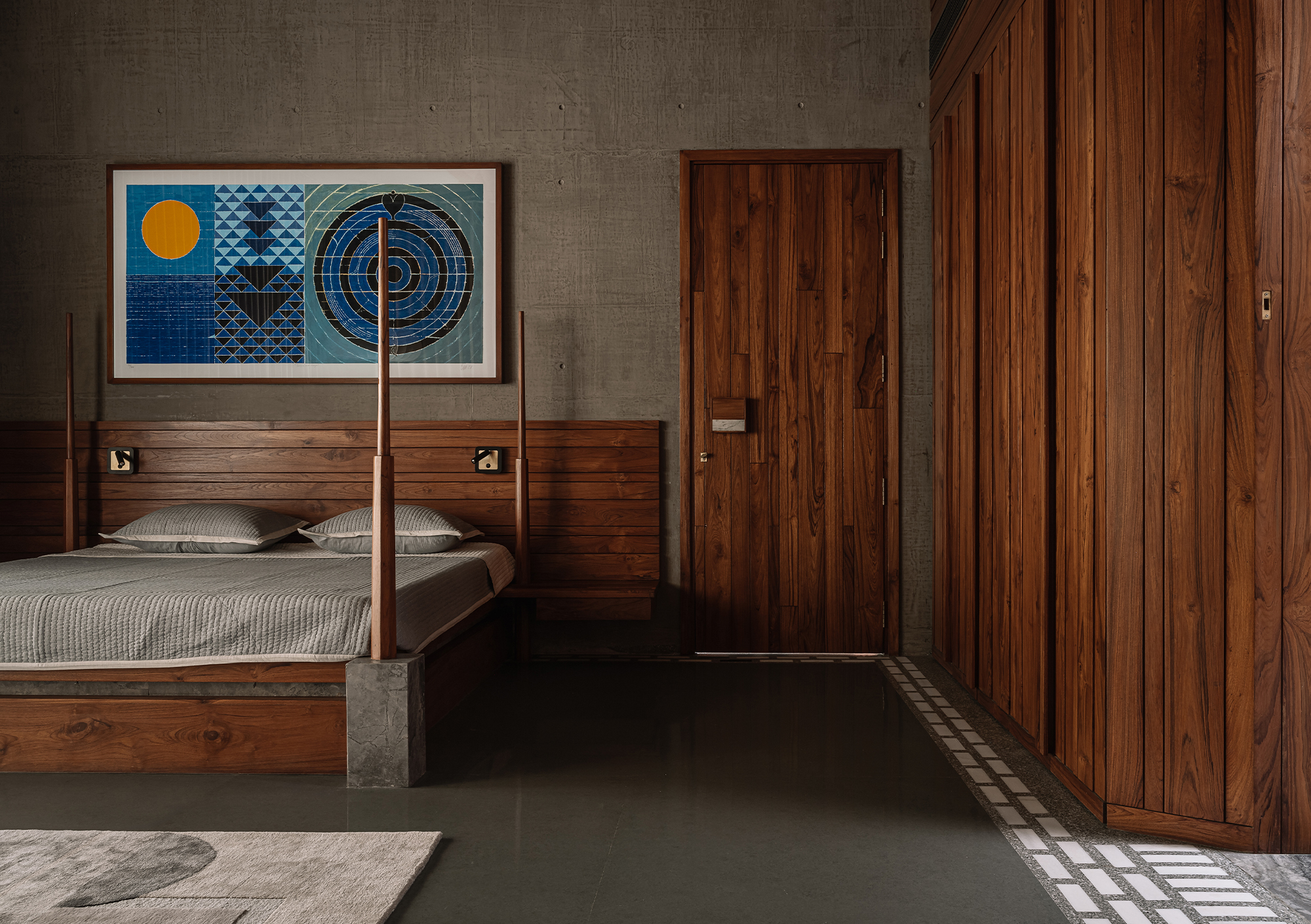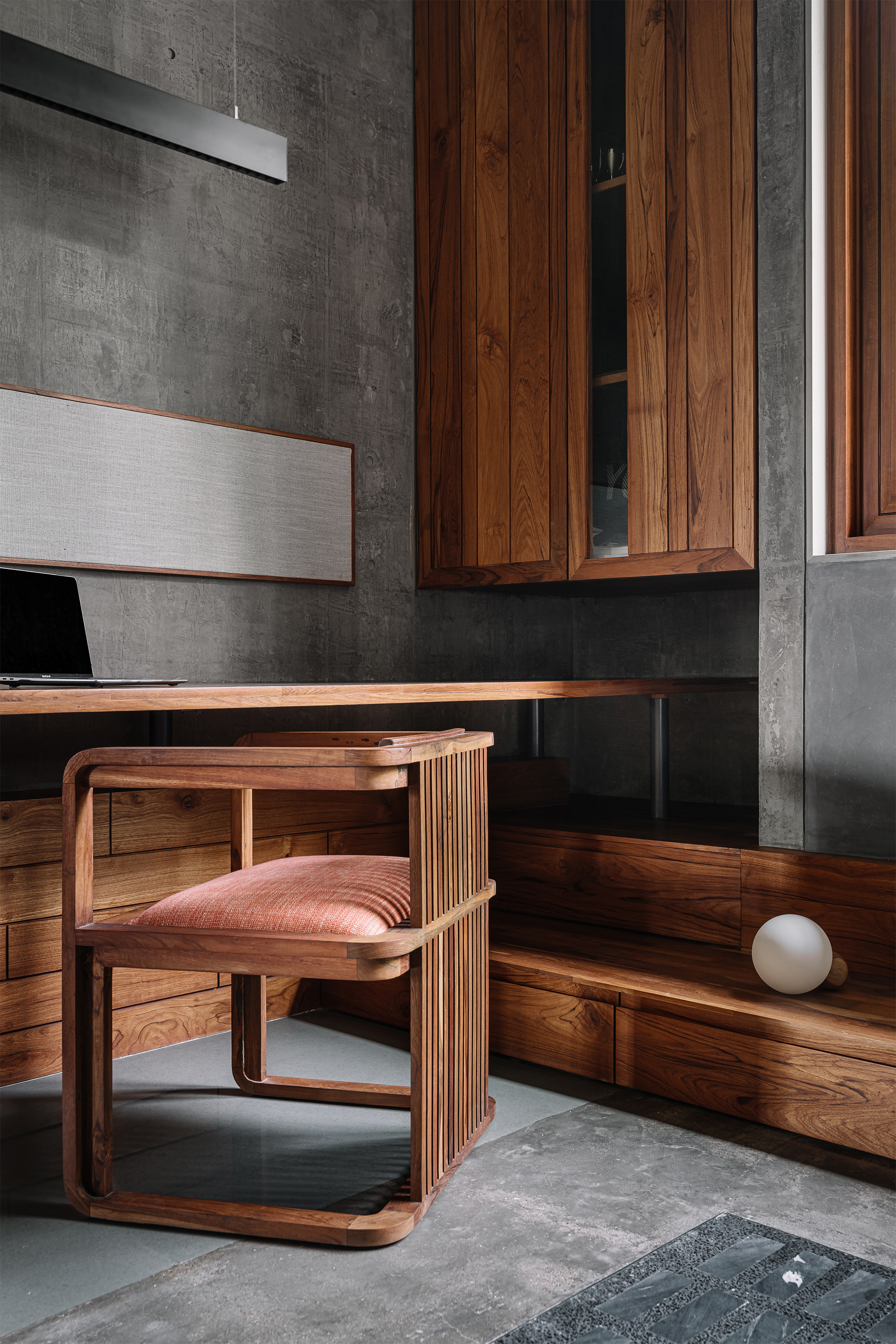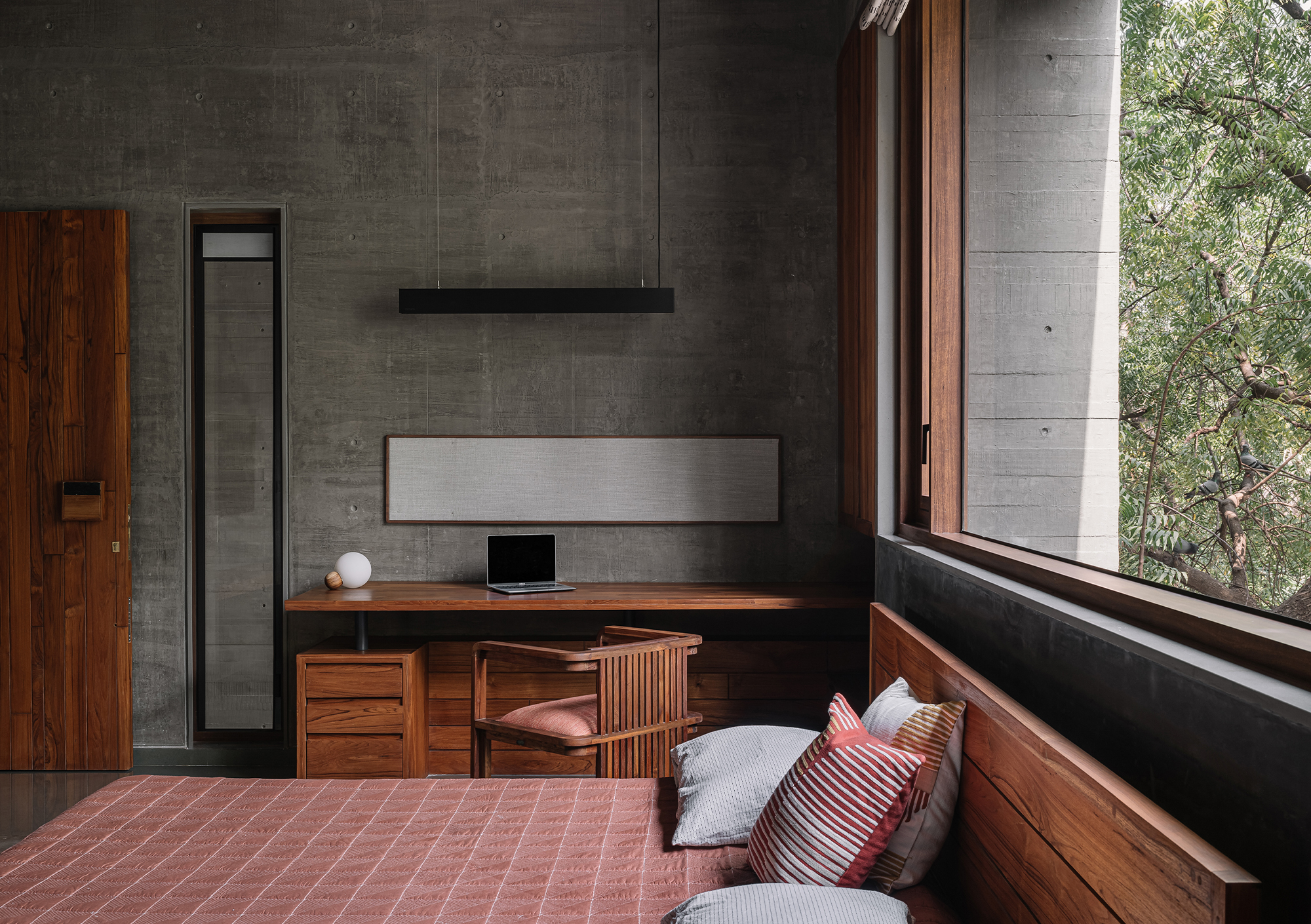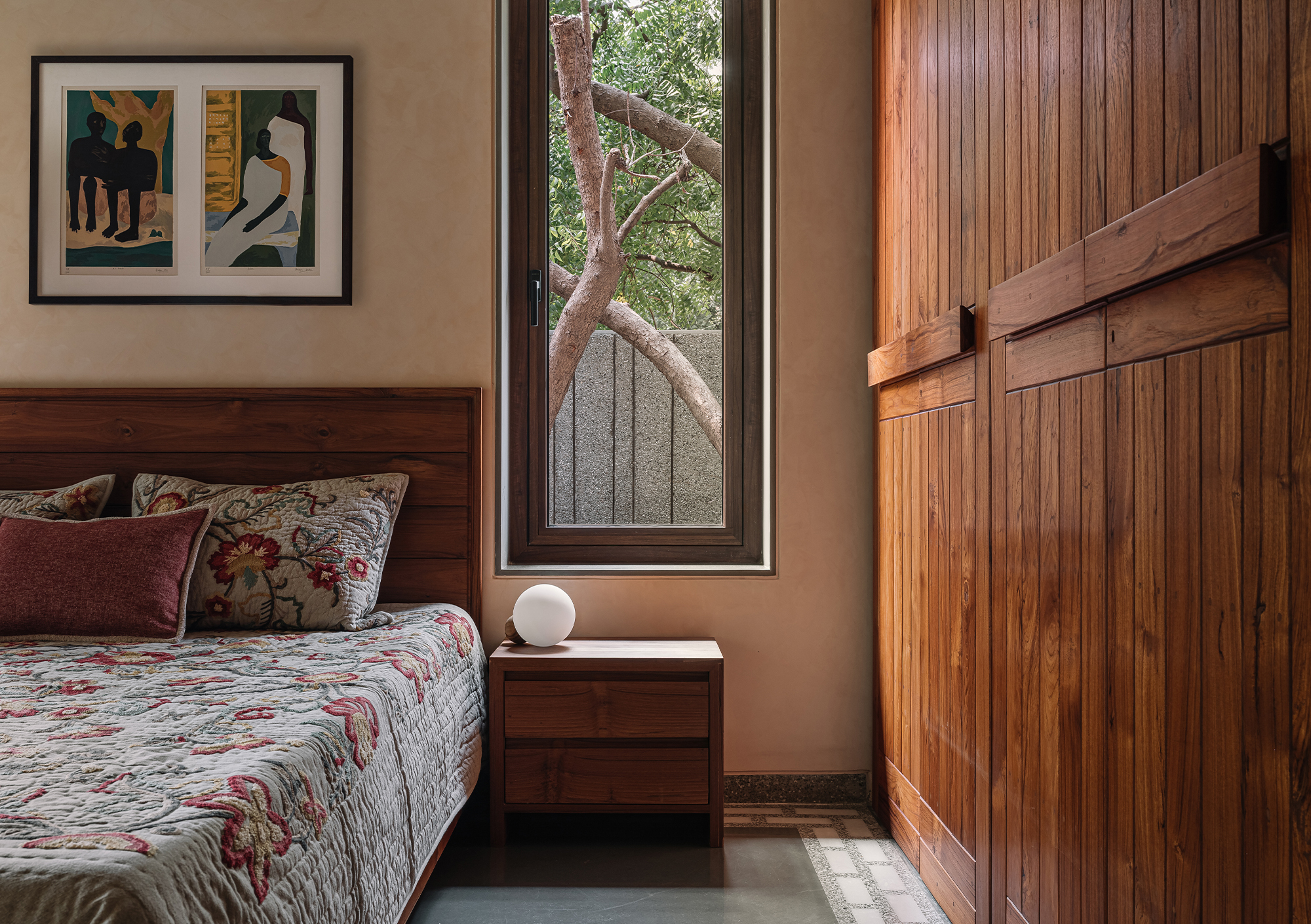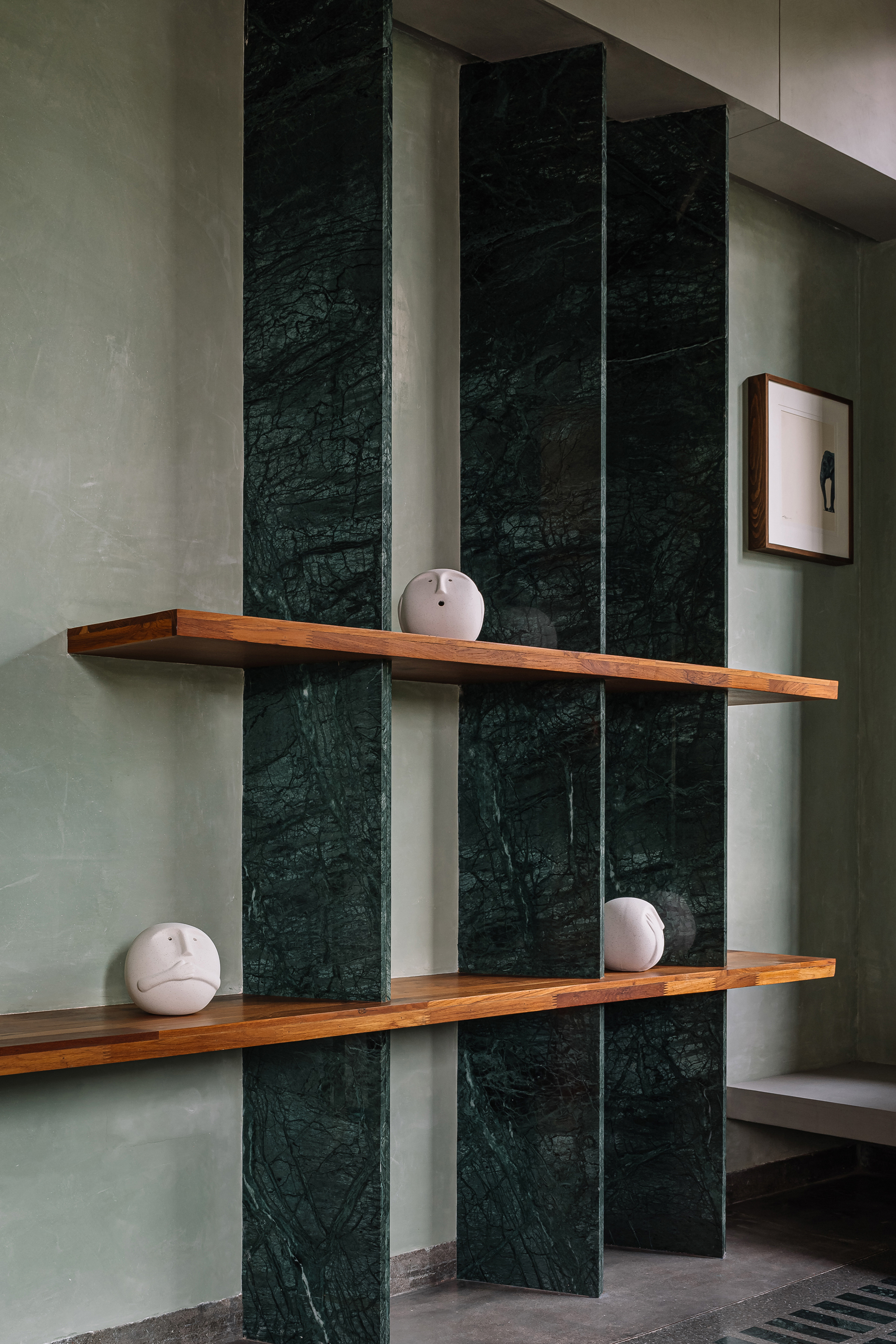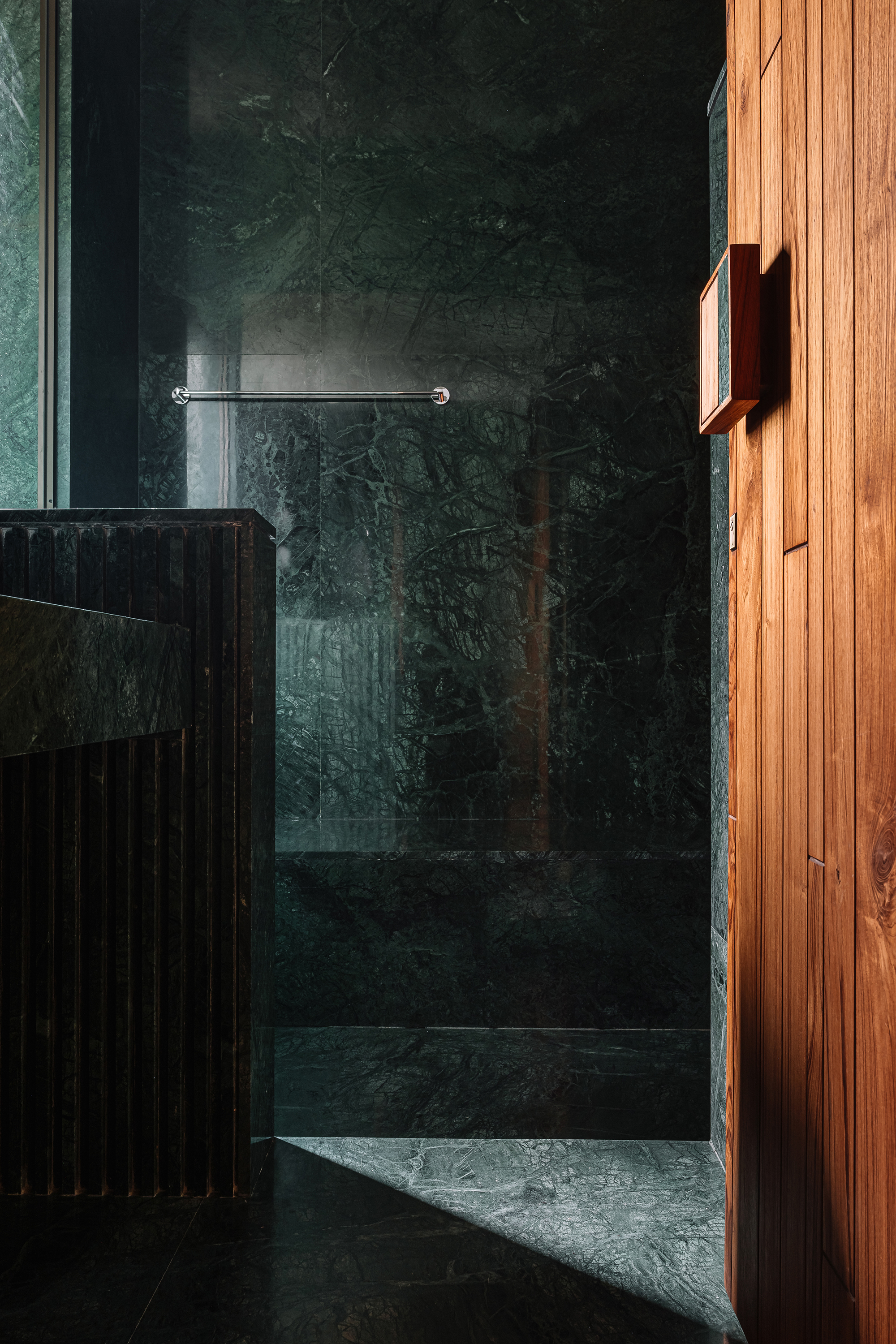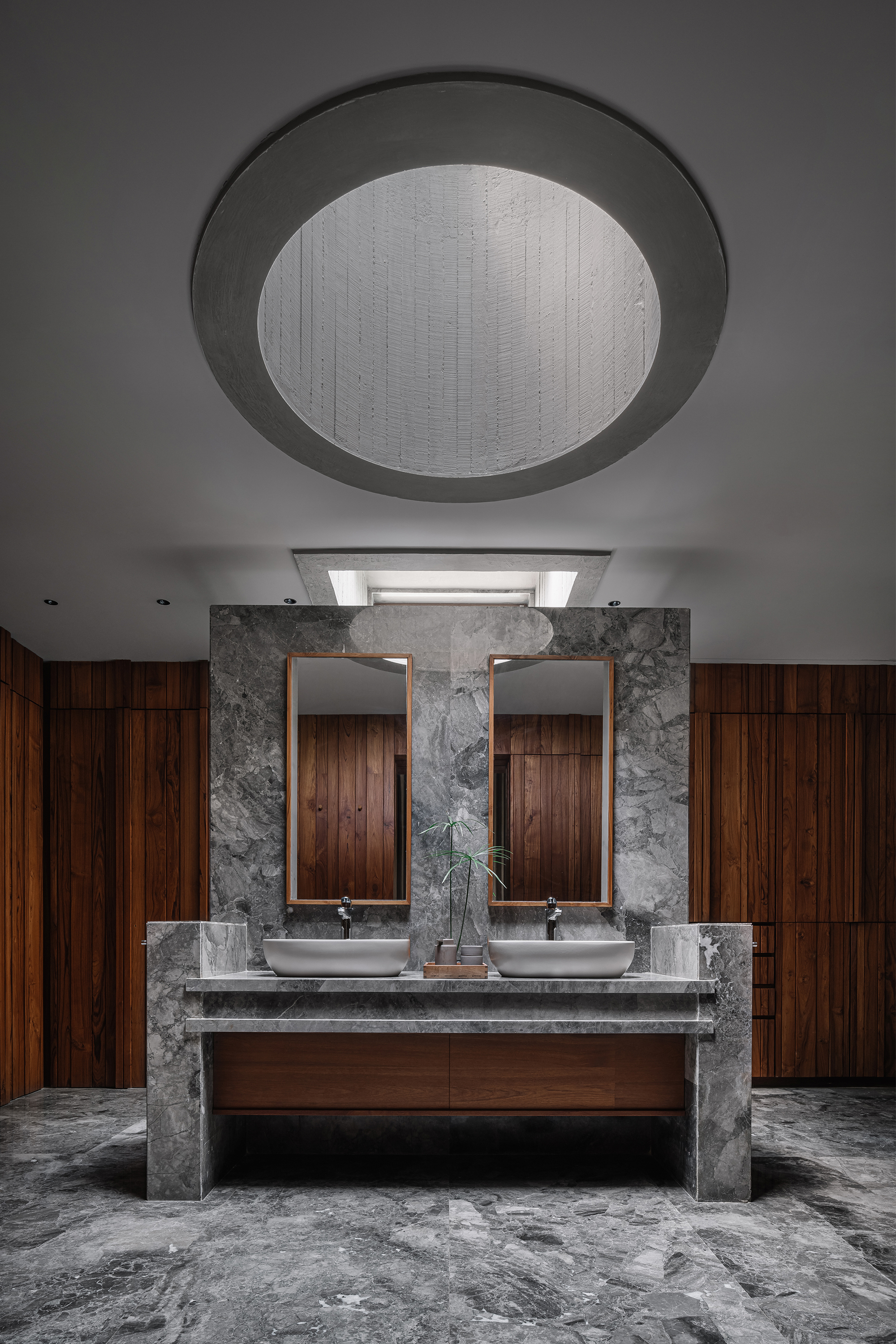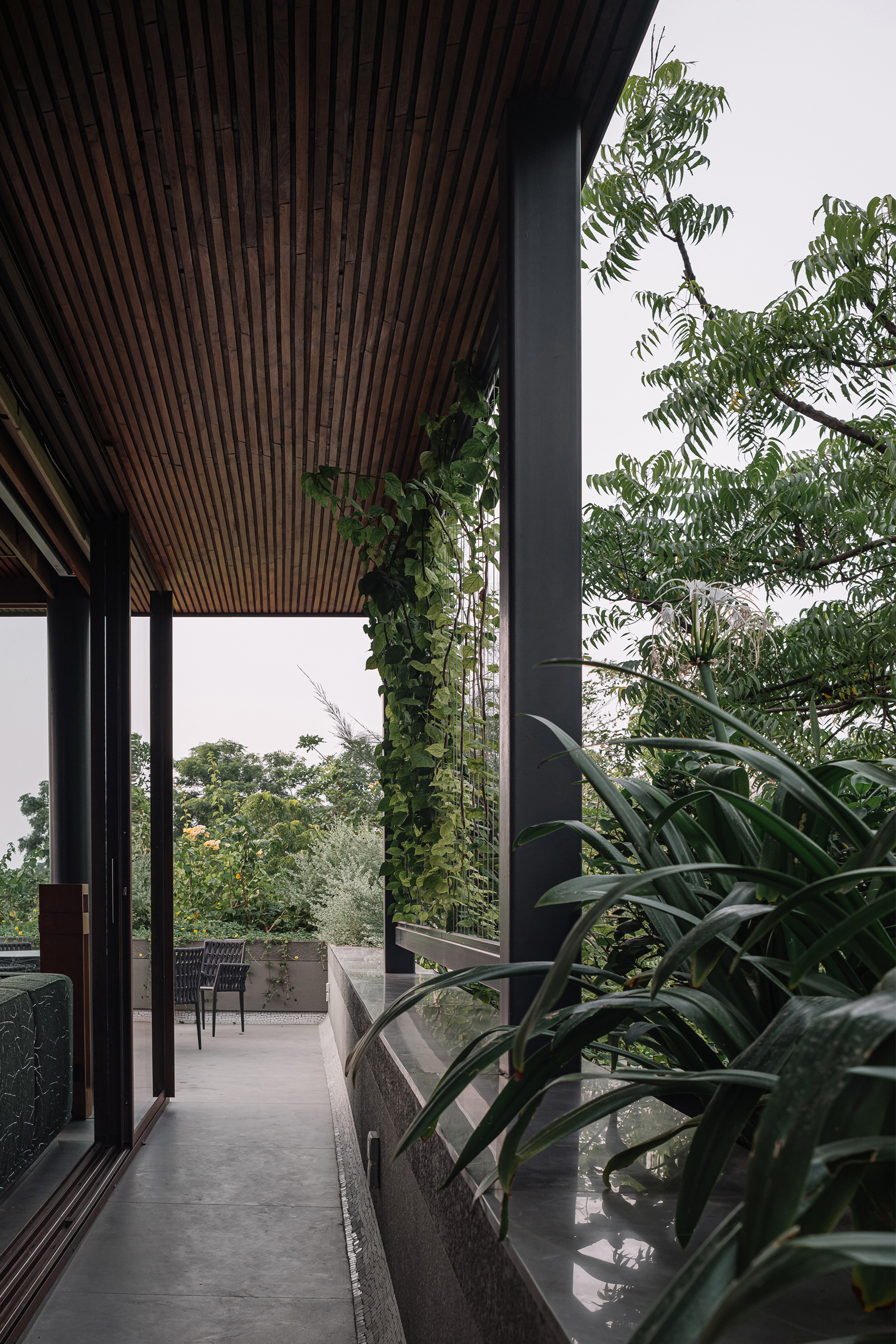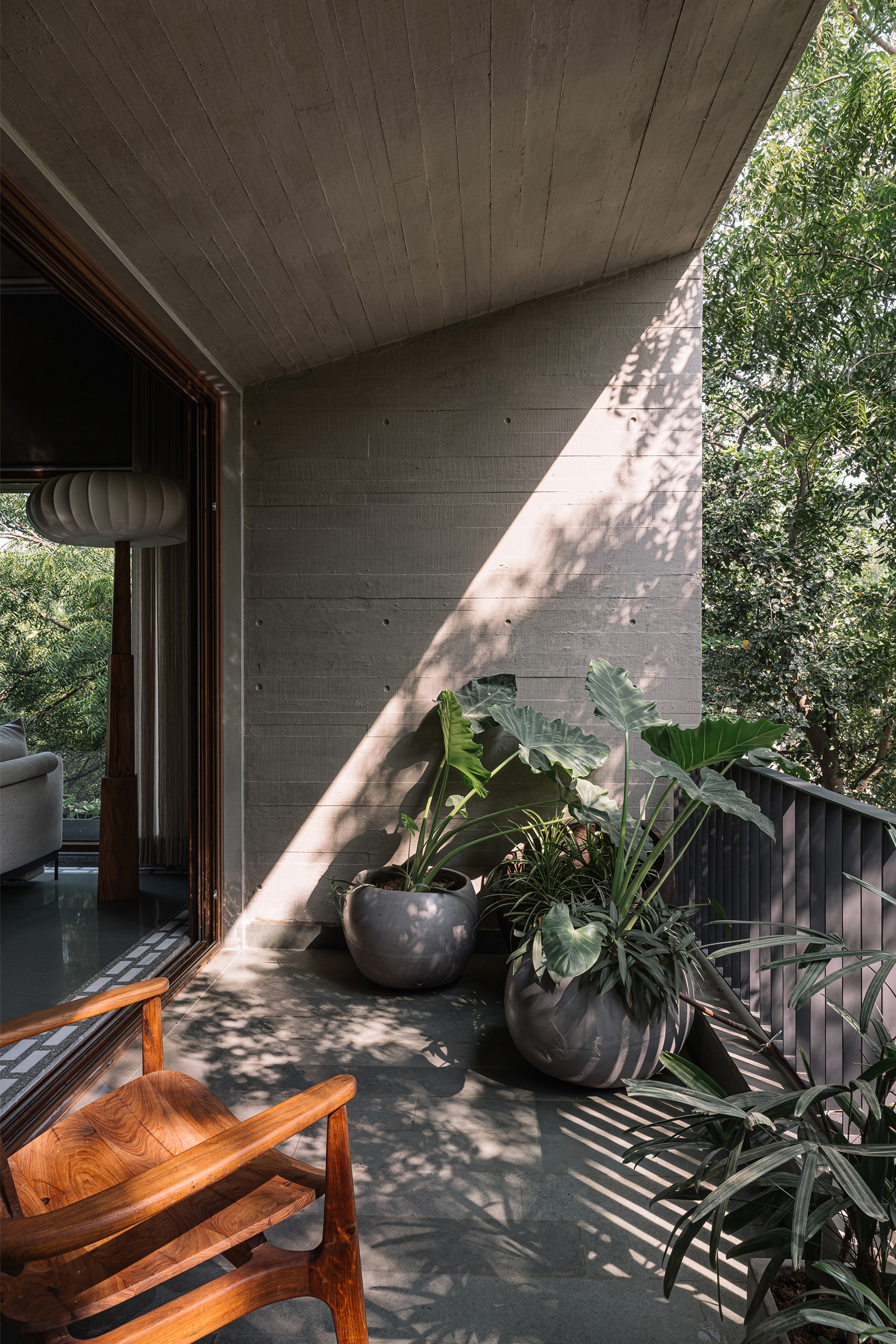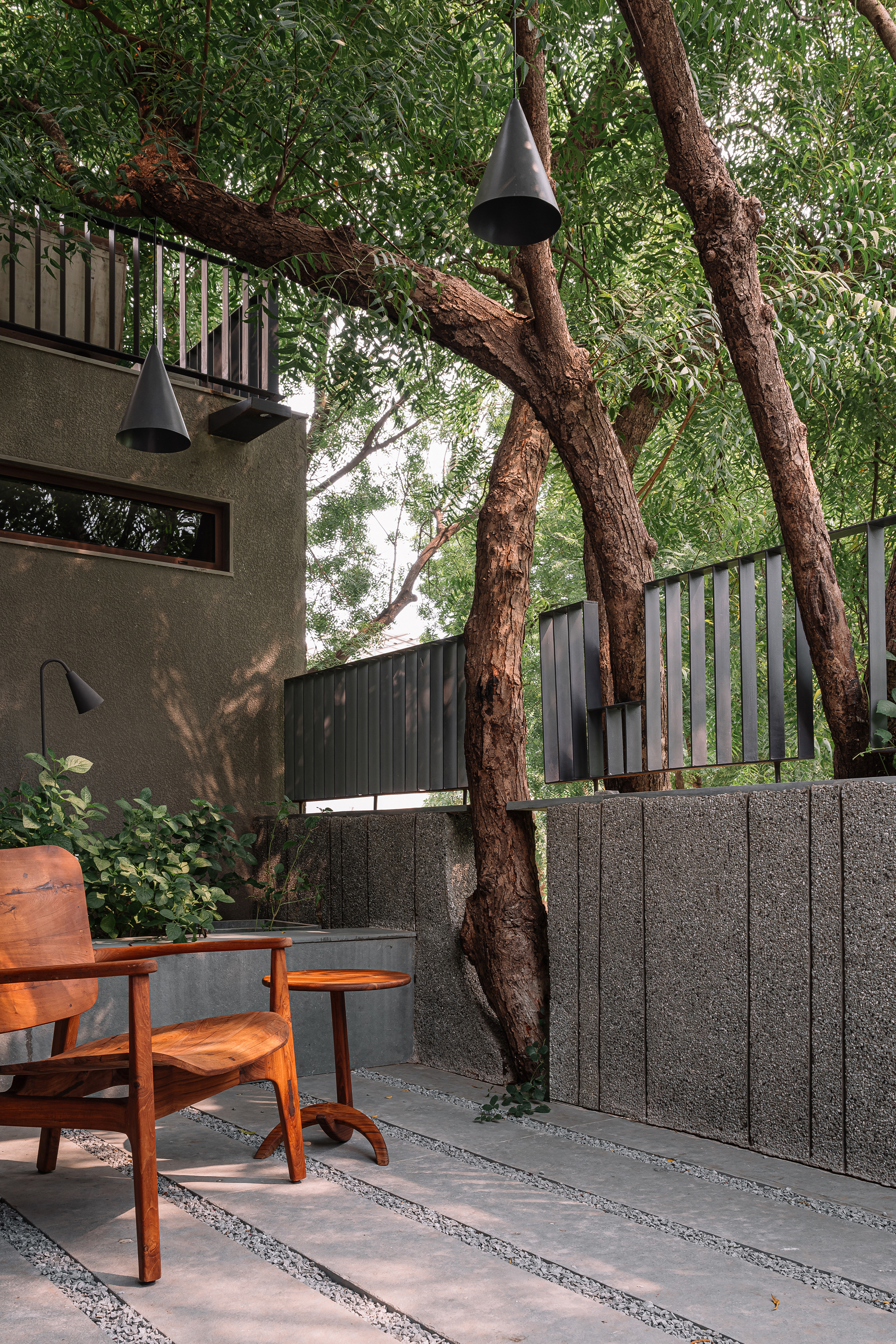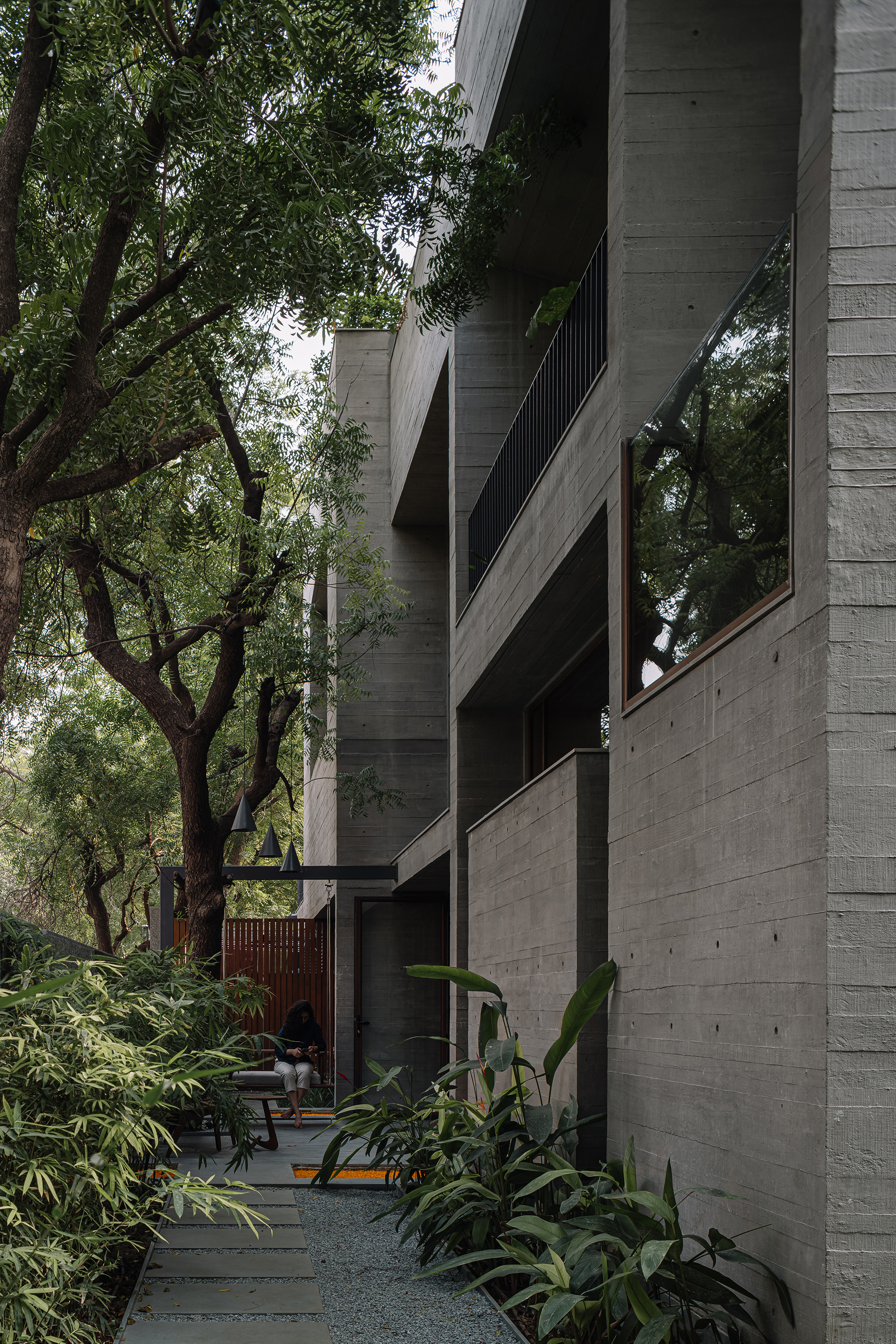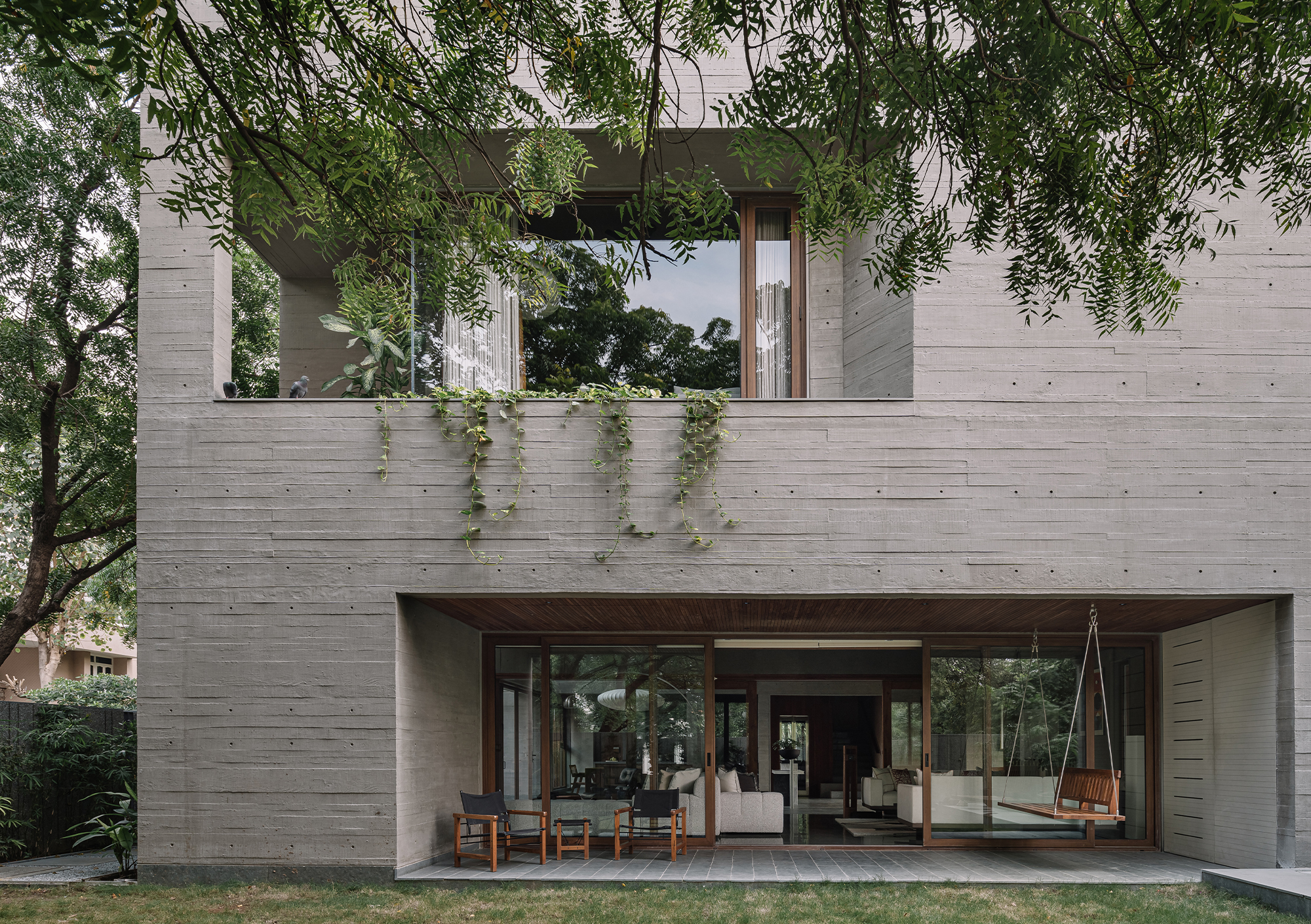Studio Saransh is an architectural firm located in Ahmedabad, India. It was founded by Manish and Malini Doshi in 1994, where "Saransh" means "summary". The studio takes a concept-driven design approach as its core, seeking a balance between rationality and emotion. Her latest work, MS Residence, continues the spirit of Ahmedabad's architectural tradition, taking nature as the narrative core and expressing it through geometric composition and delicate materials, demonstrating a sensitive response to the site and people. When it comes to "emotional architecture", they believe that scale, light and materials jointly shape people's subconscious experience of space - allowing people to re-feel the warmth and tranquility of space in the flow and rhythm of space.
Studio Saransh told us: "The 'rooting' of architecture is not a replication of old forms, but a sensitive listening - listening to the site, the trees, the climate, and the families living in it." We use local materials and techniques because these elements belong to the local culture and climate and are truly suitable for this land. As they summed it up: "Our design philosophy has a very pragmatic attitude, revolving around the continuous dialogue between nature and the built environment, while attempting to remember the built site through its materials or craftsmanship."
Studio Saransh’s MS House in Ahmedabad offers a bold answer. The design of the house begins with a simple promise: to preserve the site’s nine mature neem trees at all cost. The result is a concrete structure that bends to nature's will, influencing every decision—from spatial layout to the architectural form and material palette—in the process. This sensitivity to context and environment is a hallmark of Studio Saransh’s design ethos, which emphasises functional elegance with an impactful design language.
